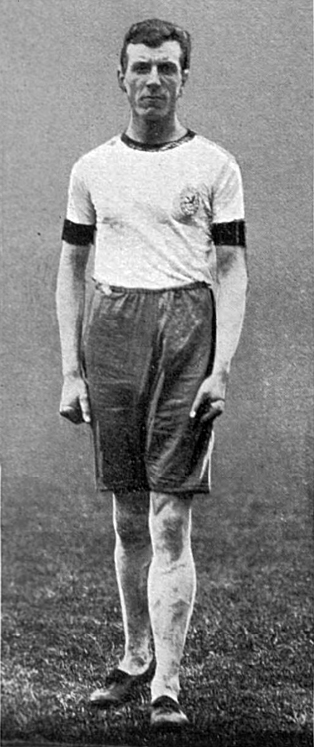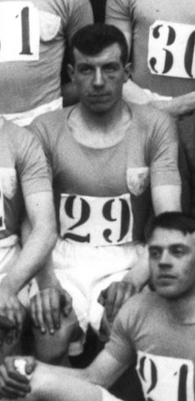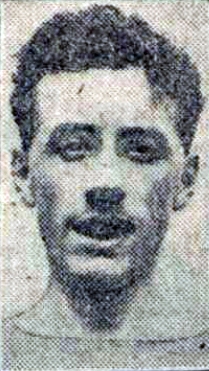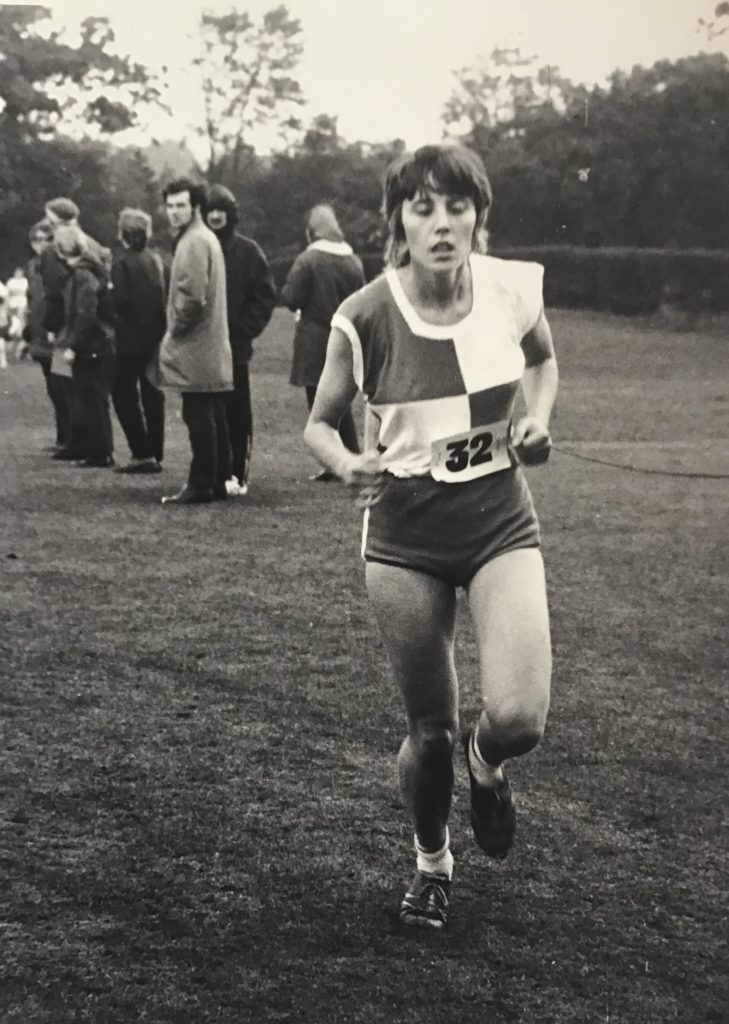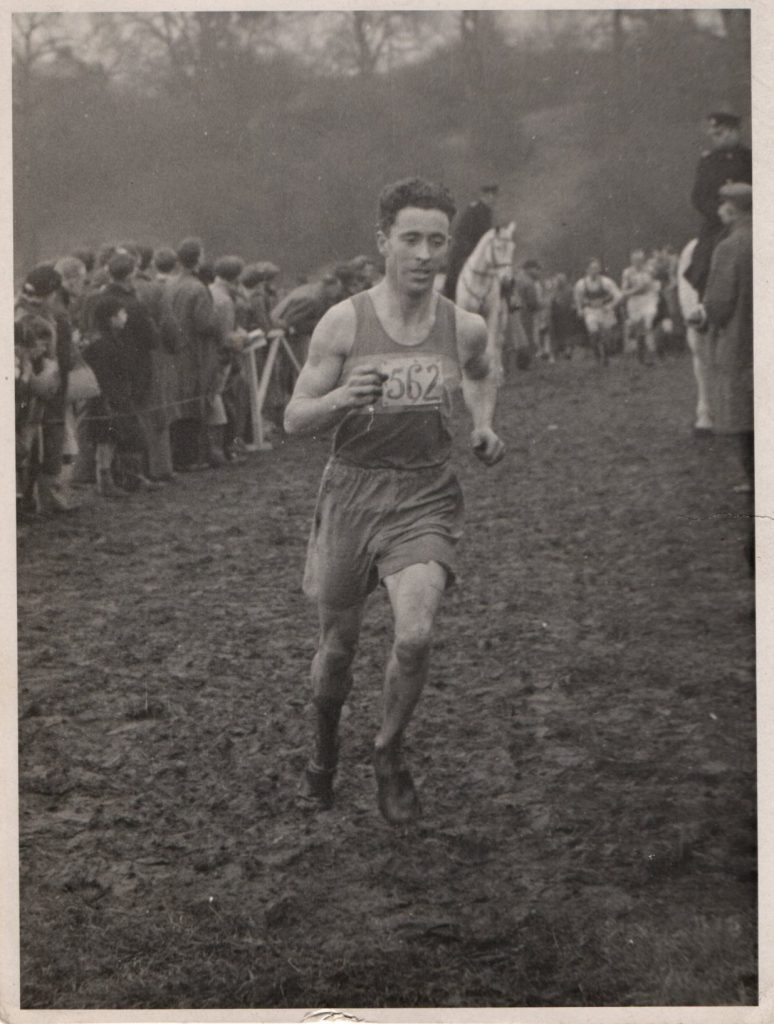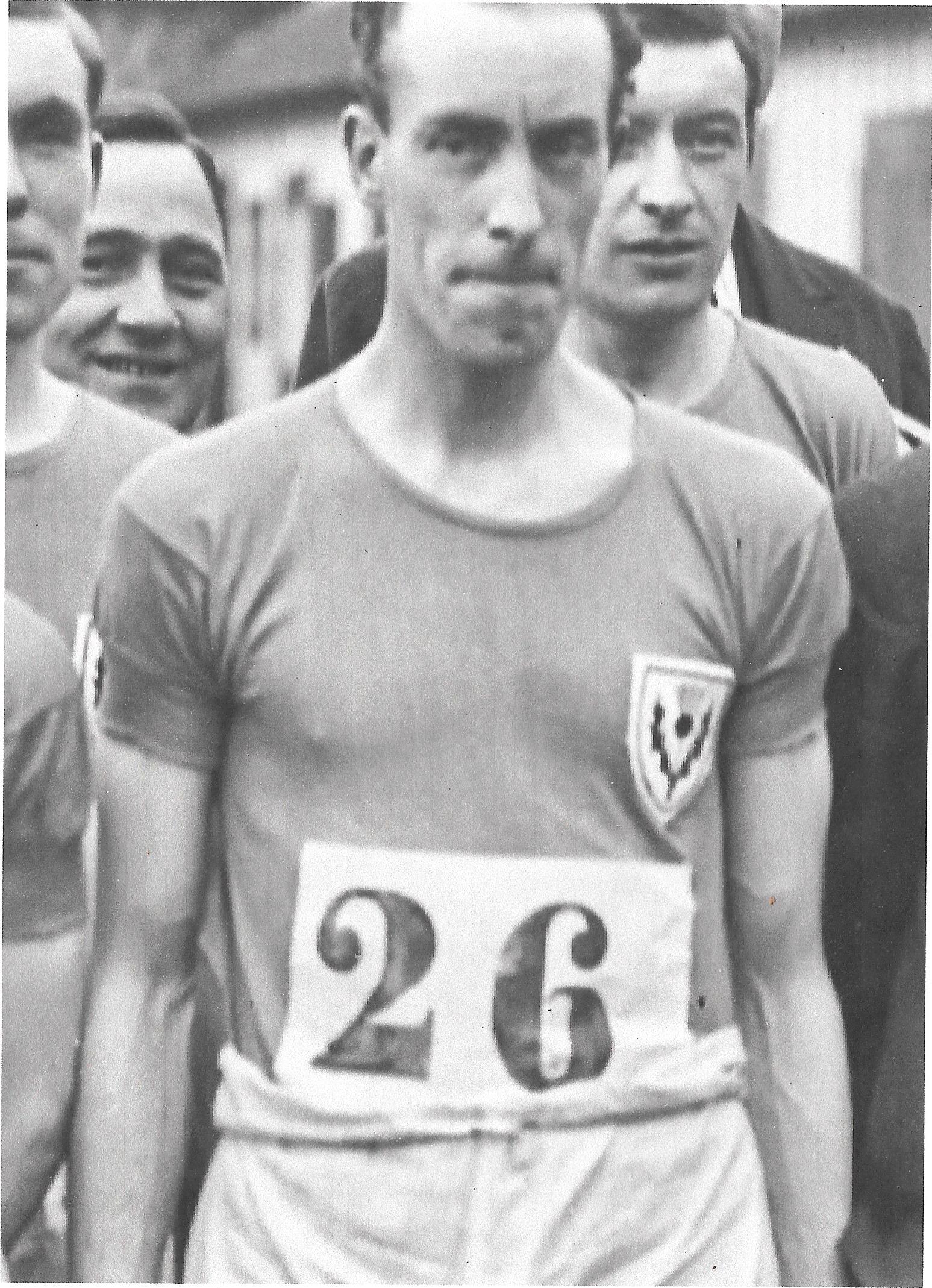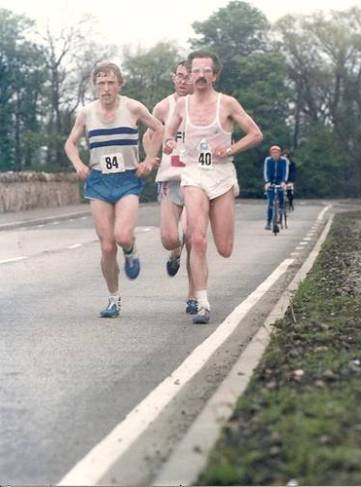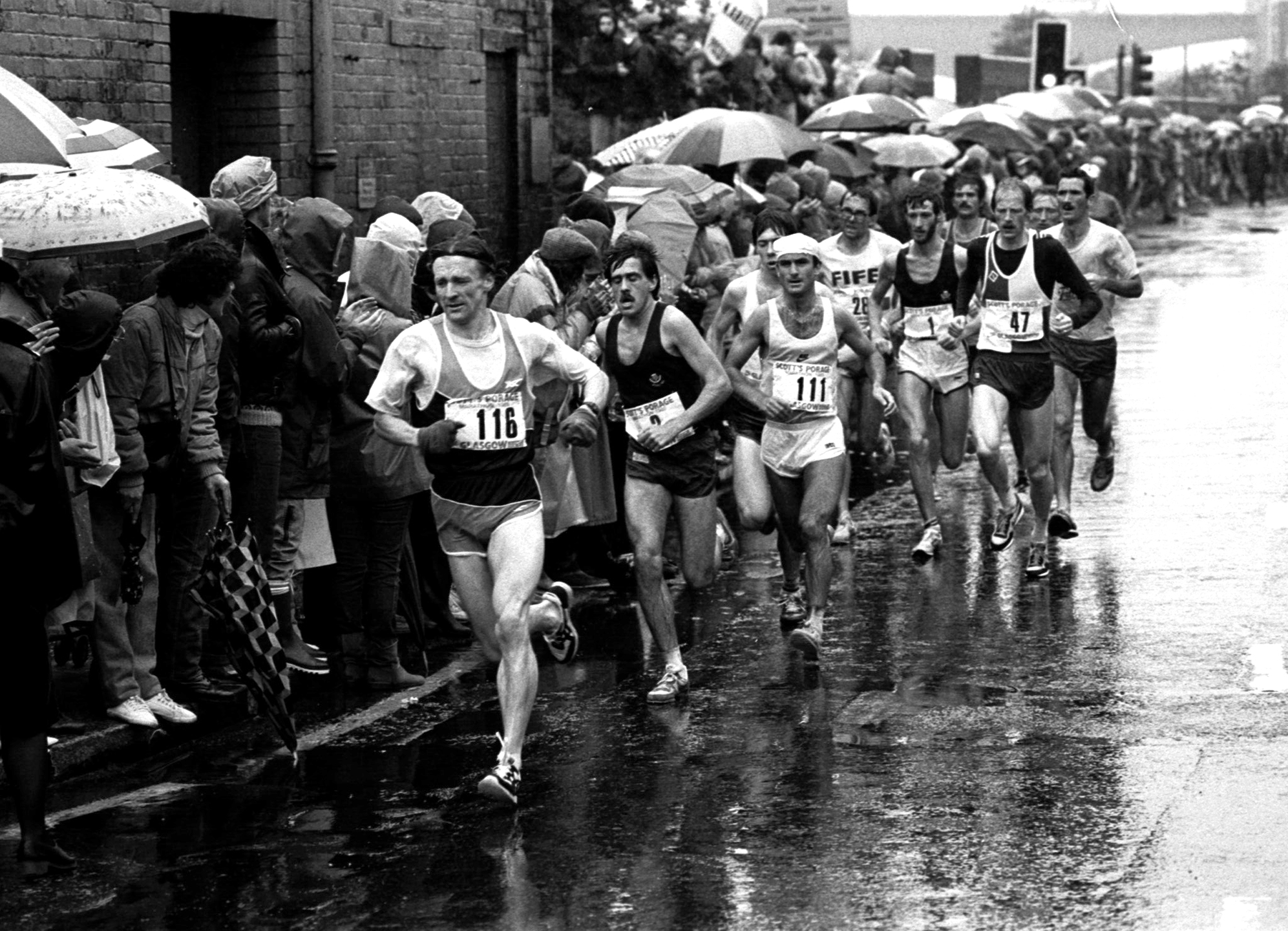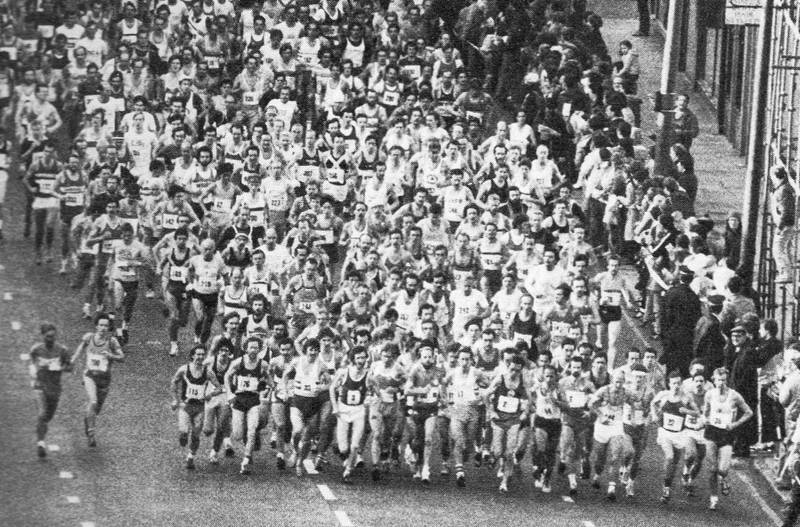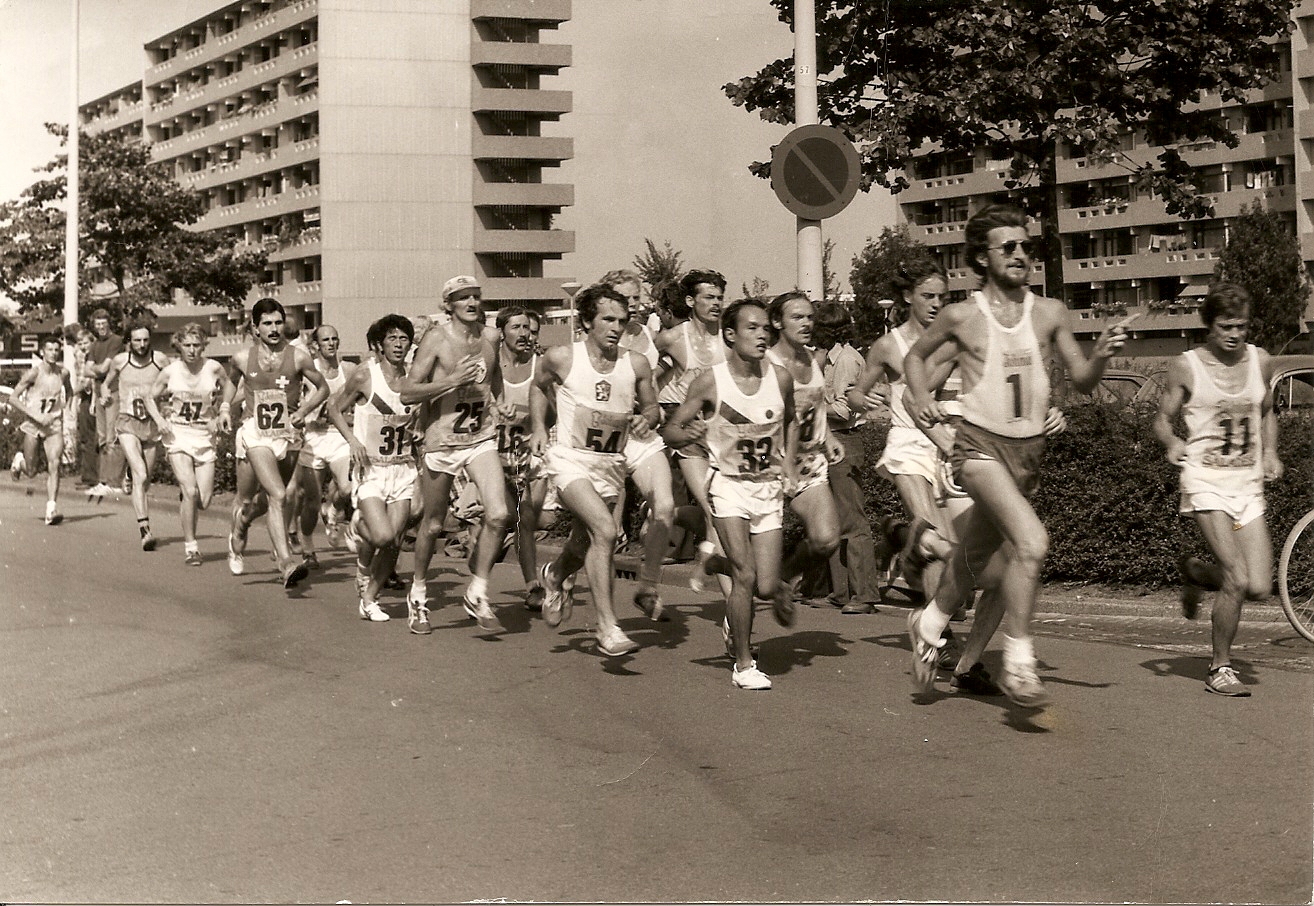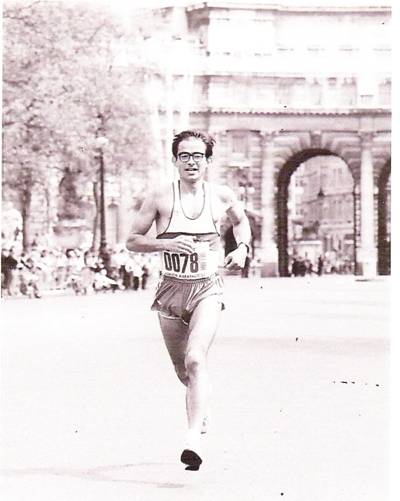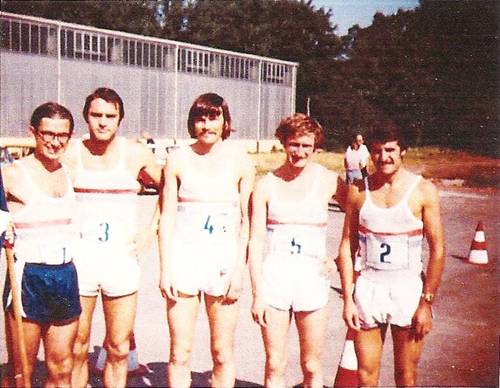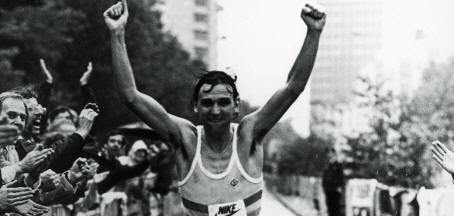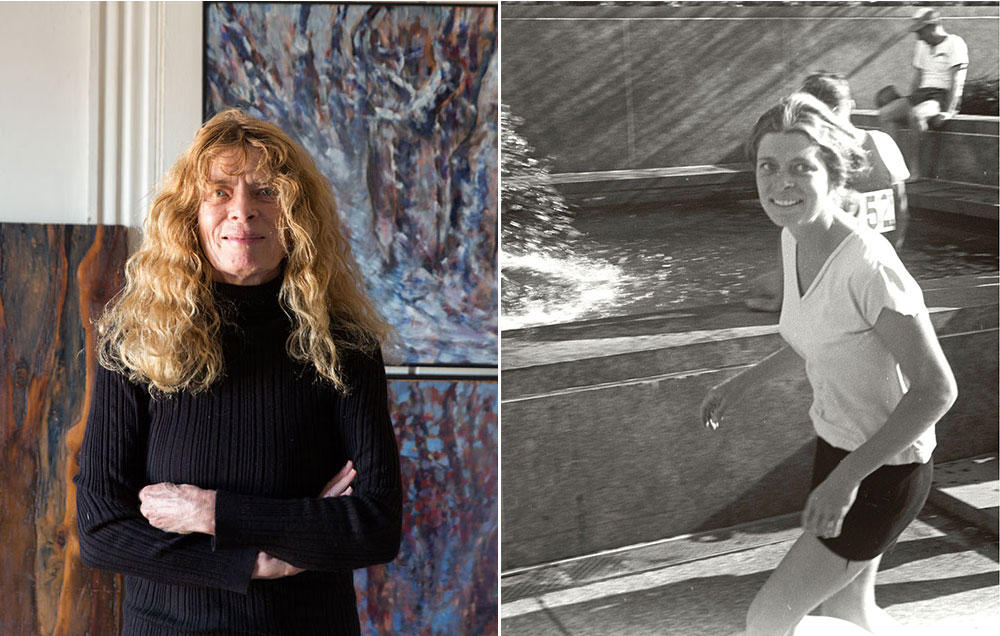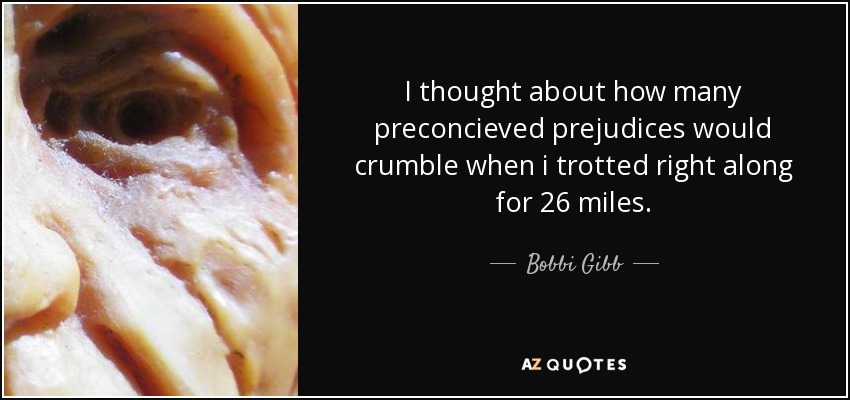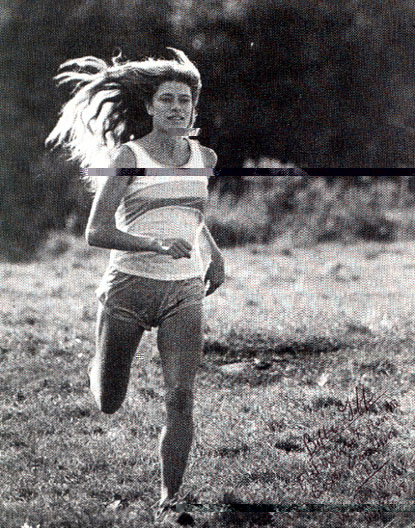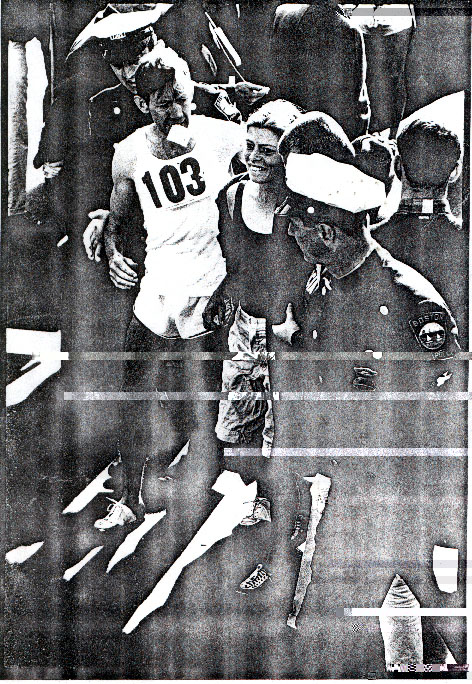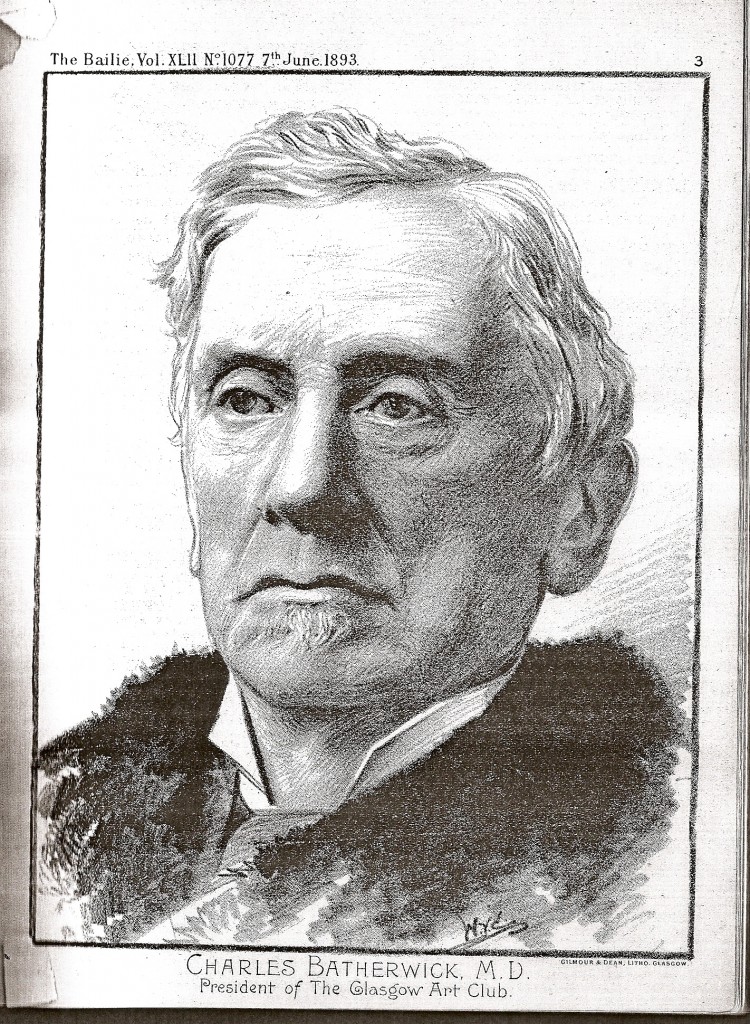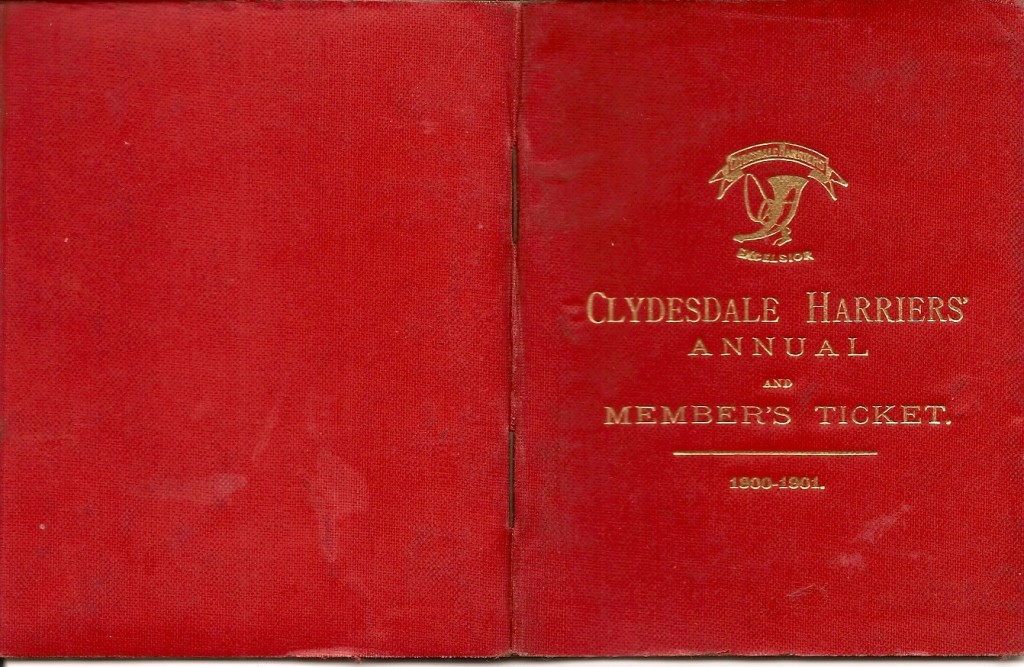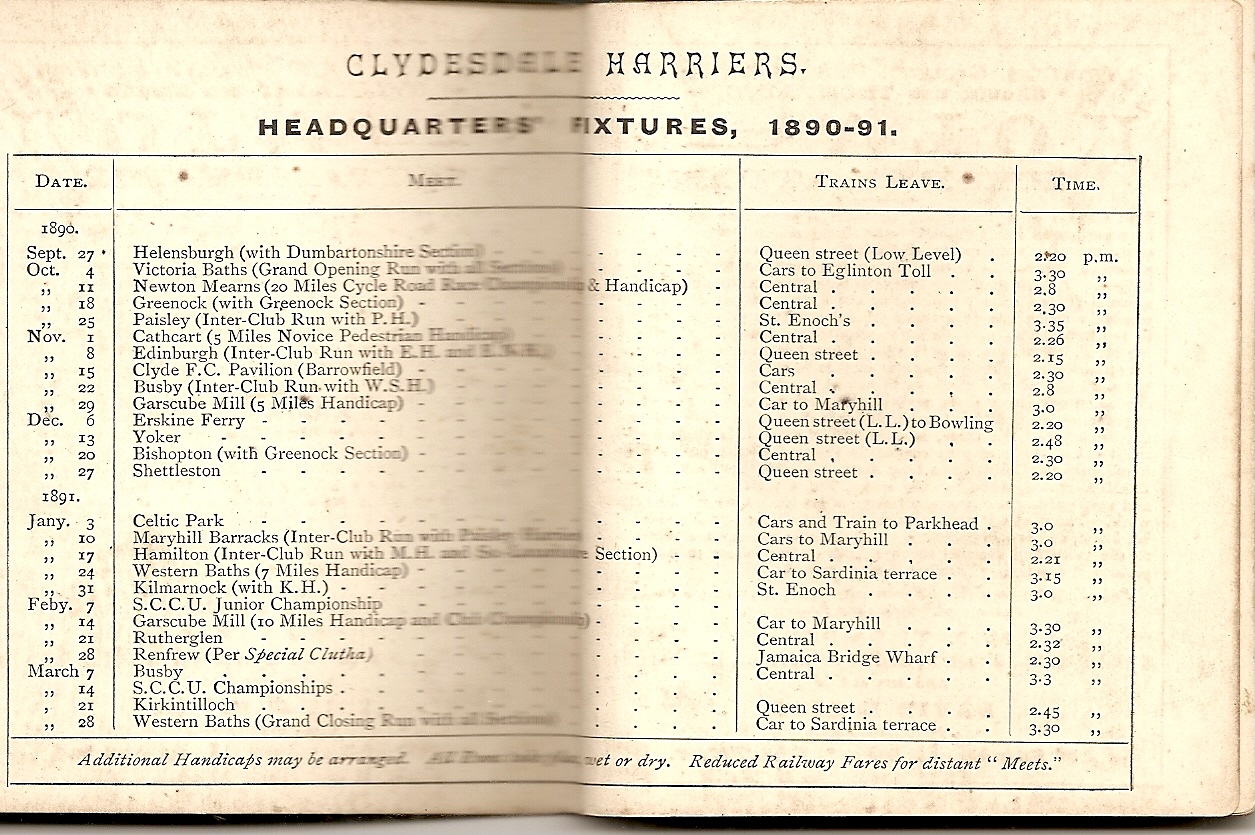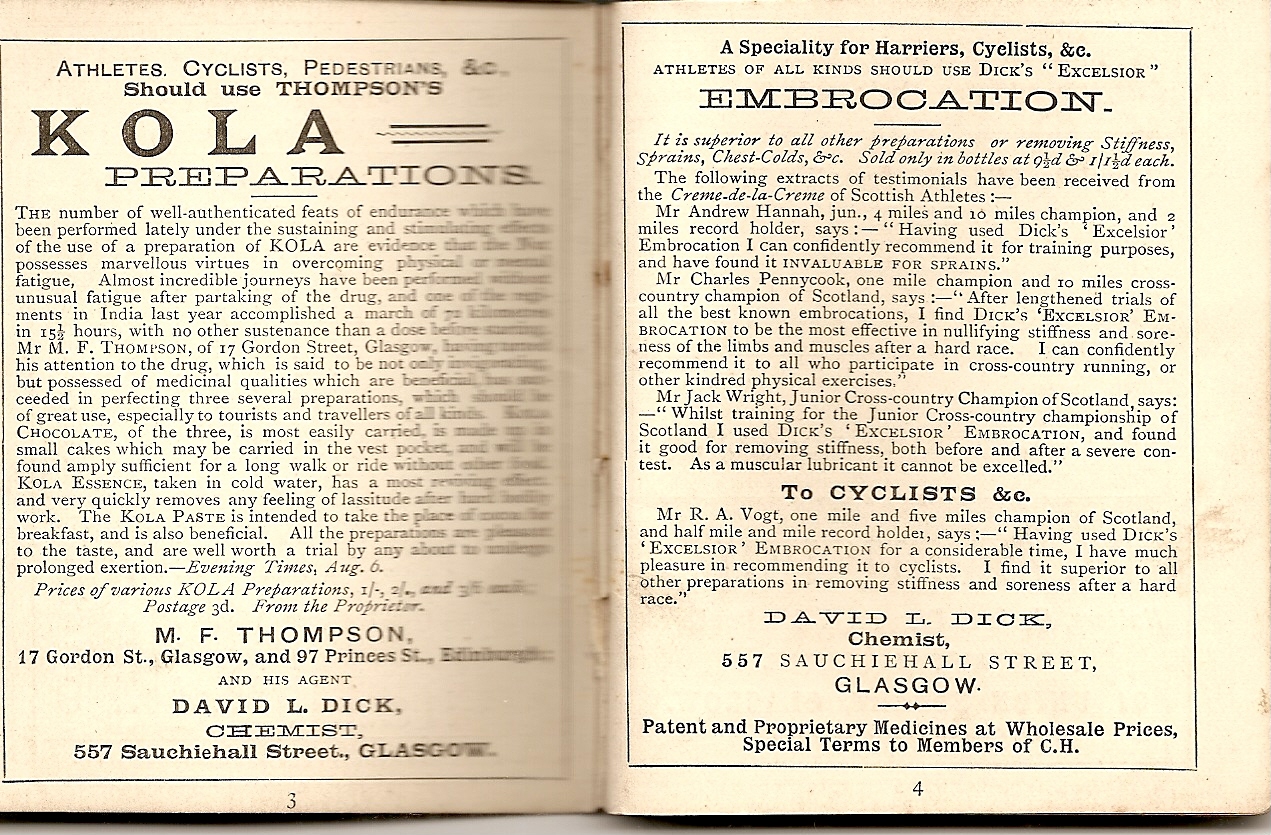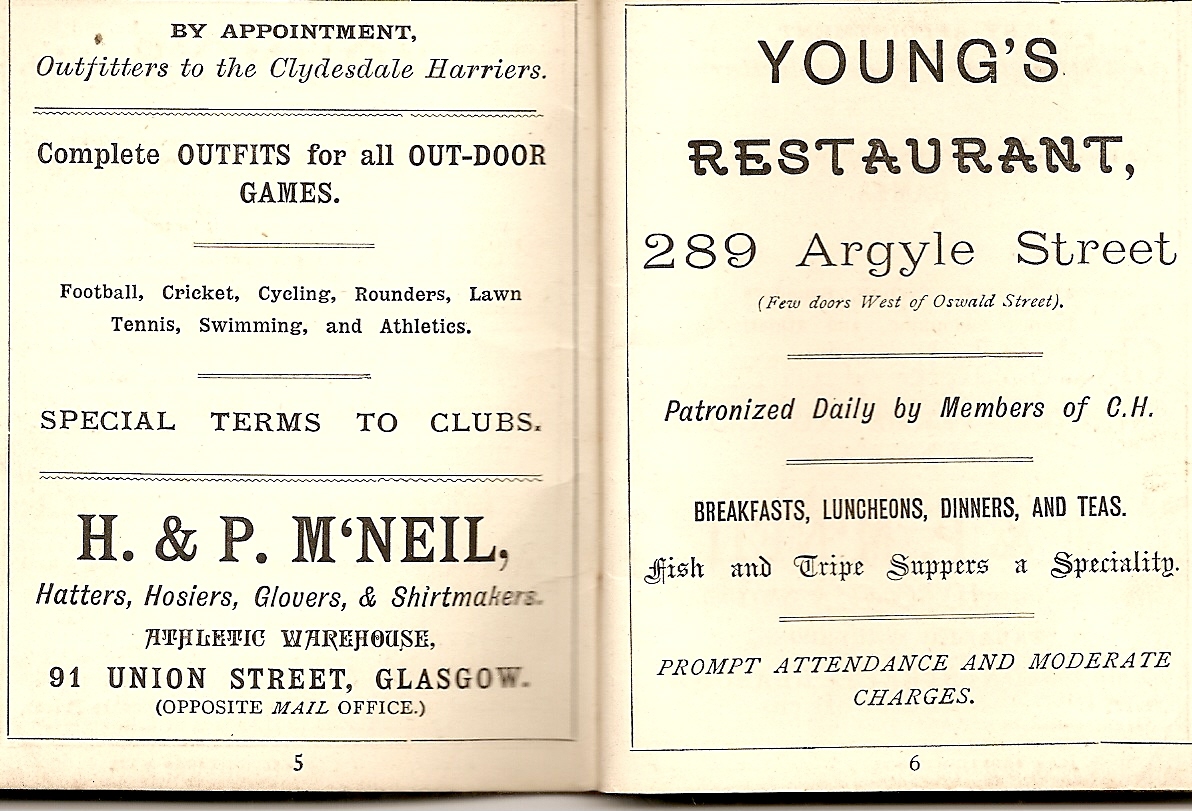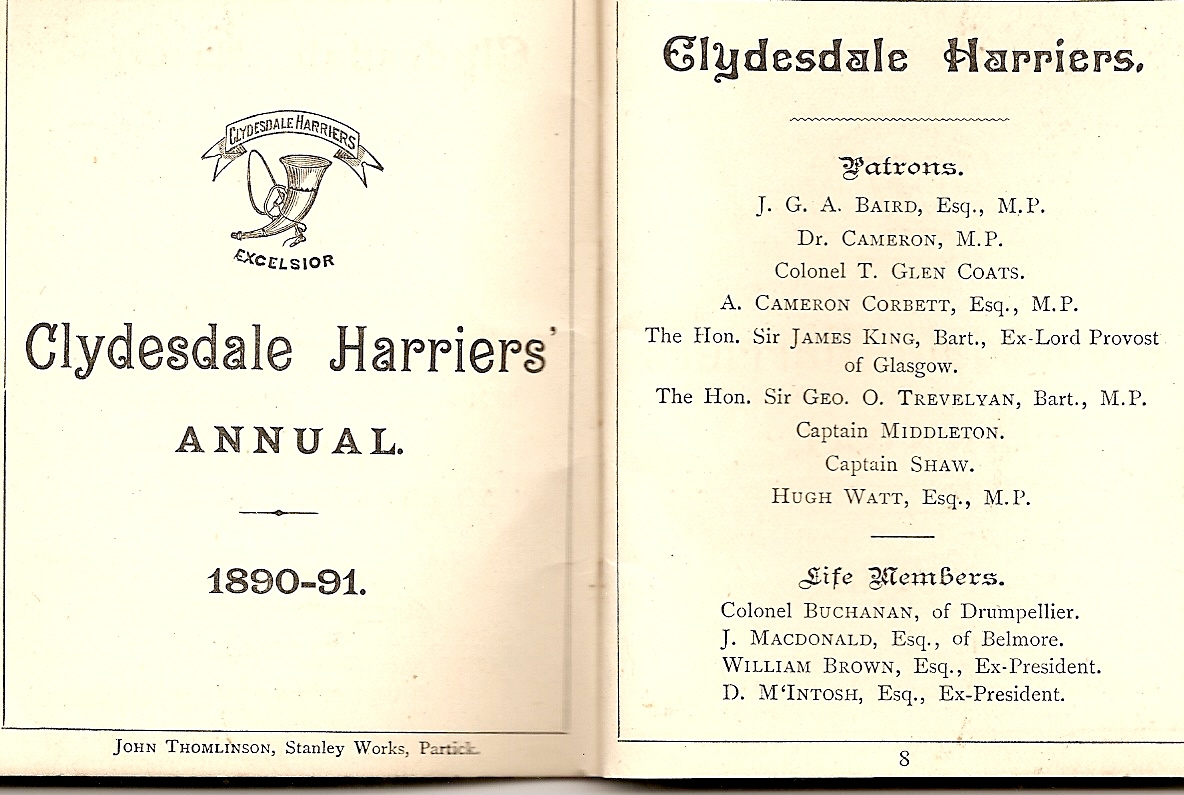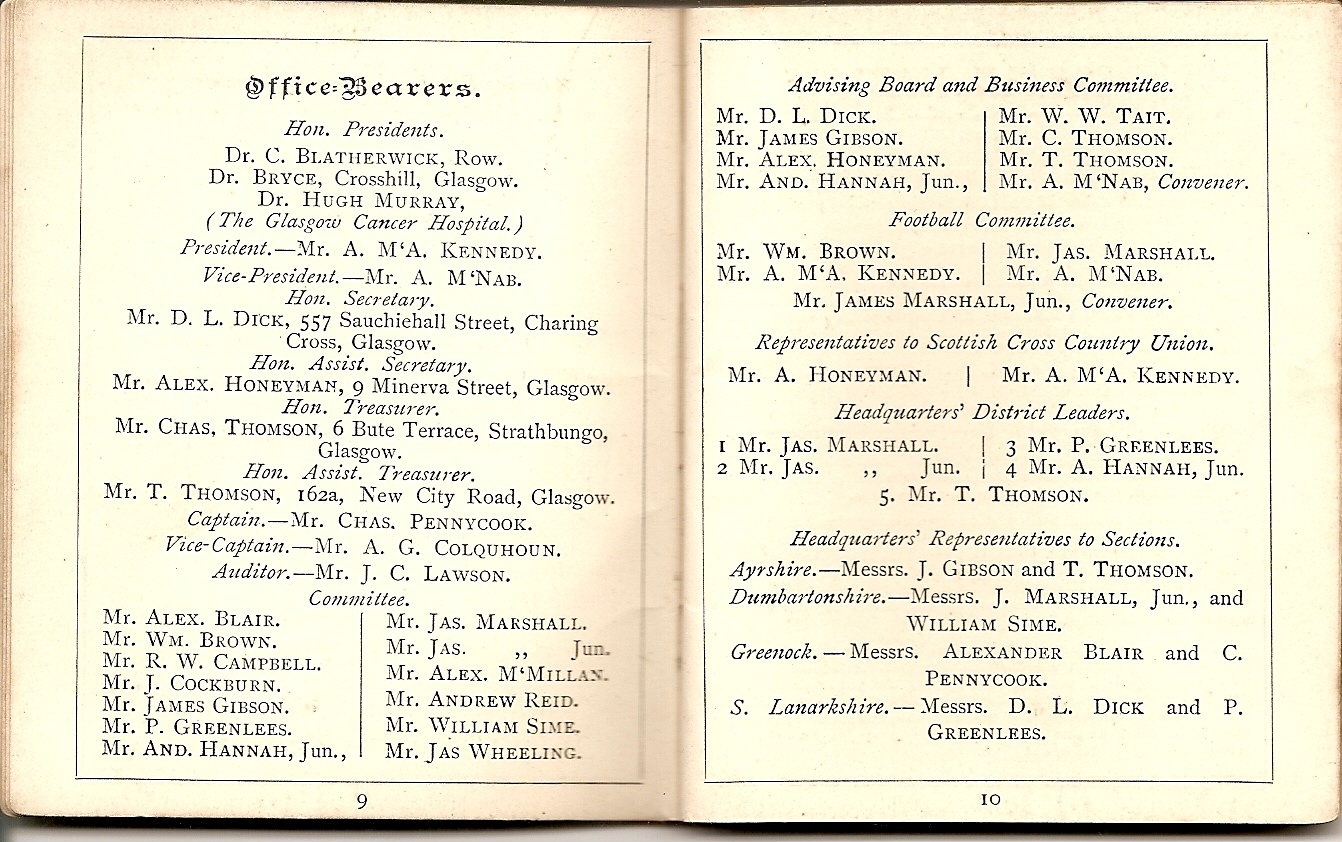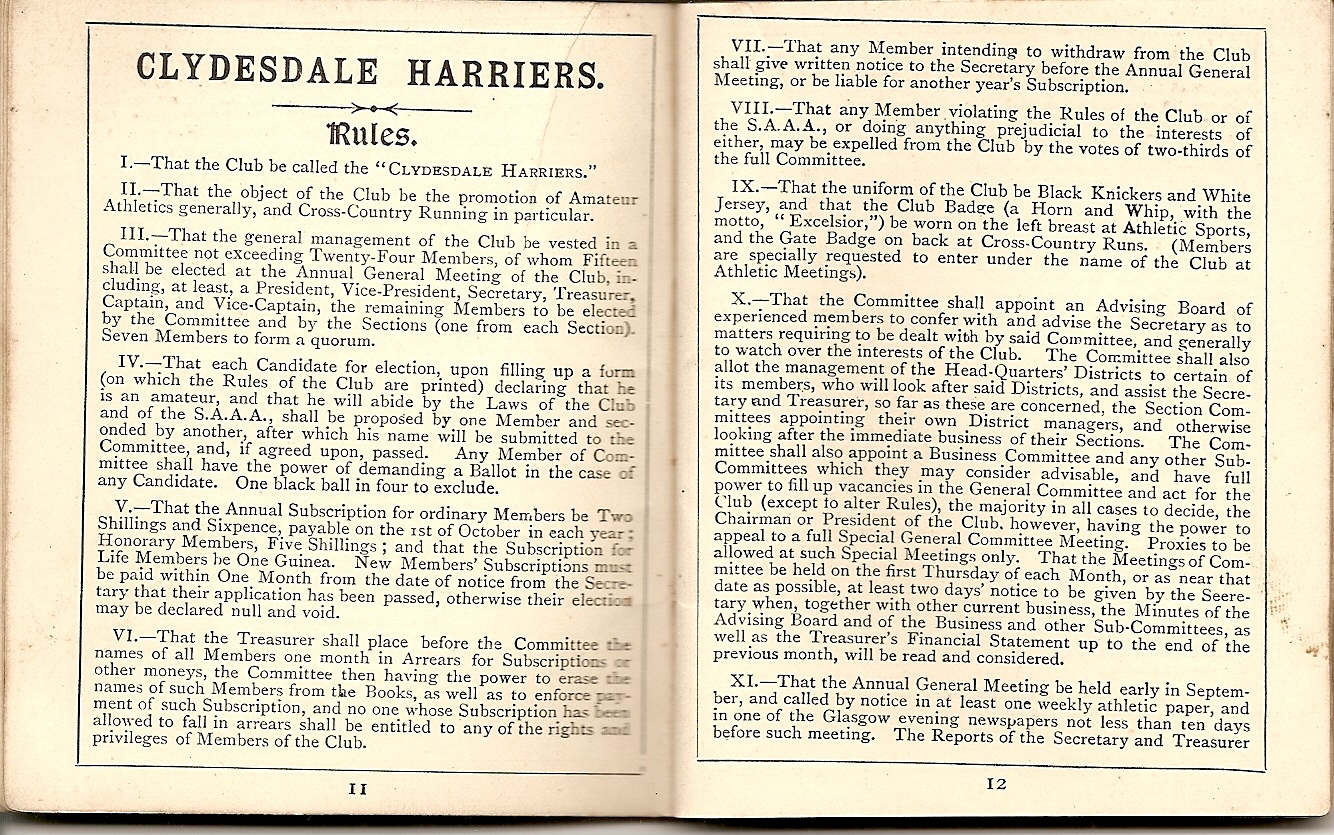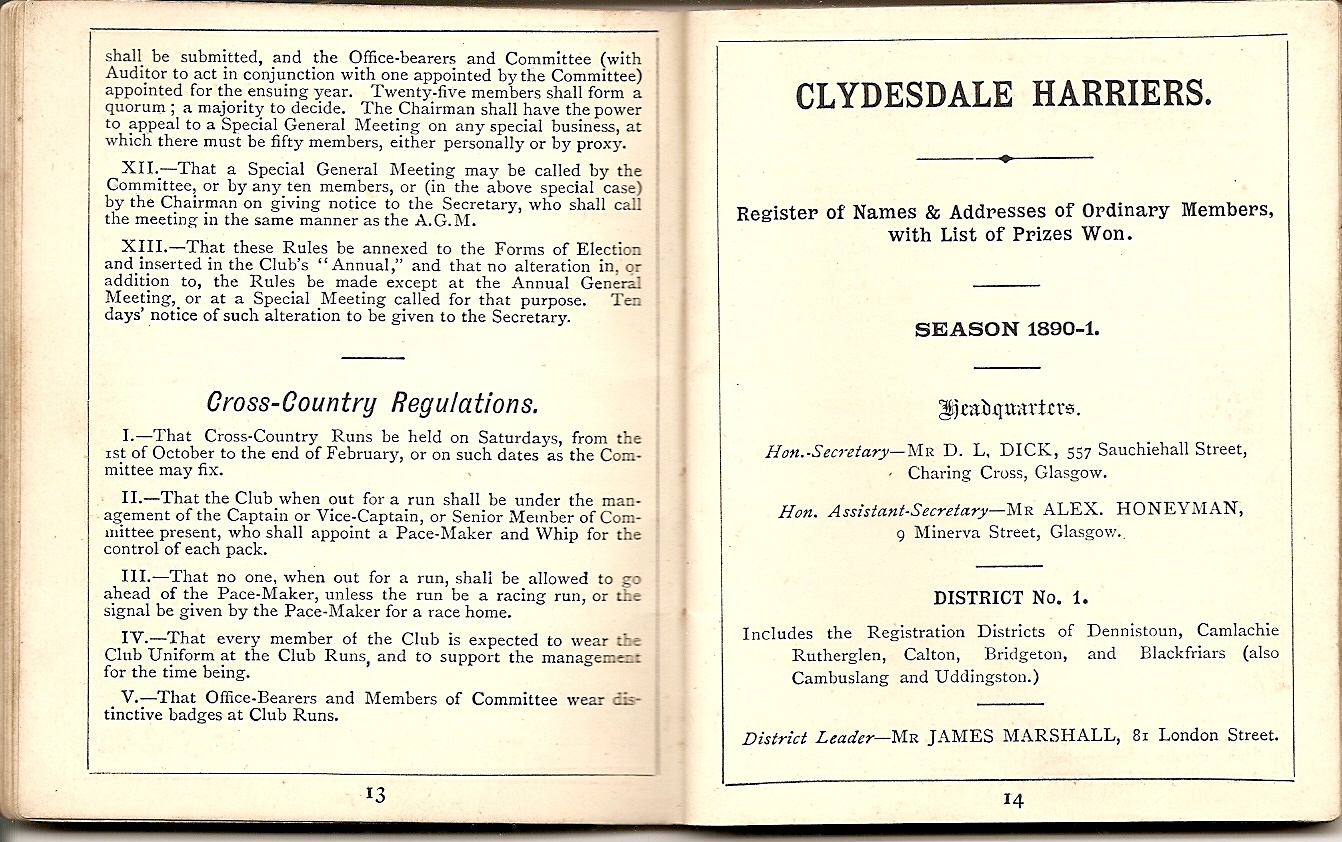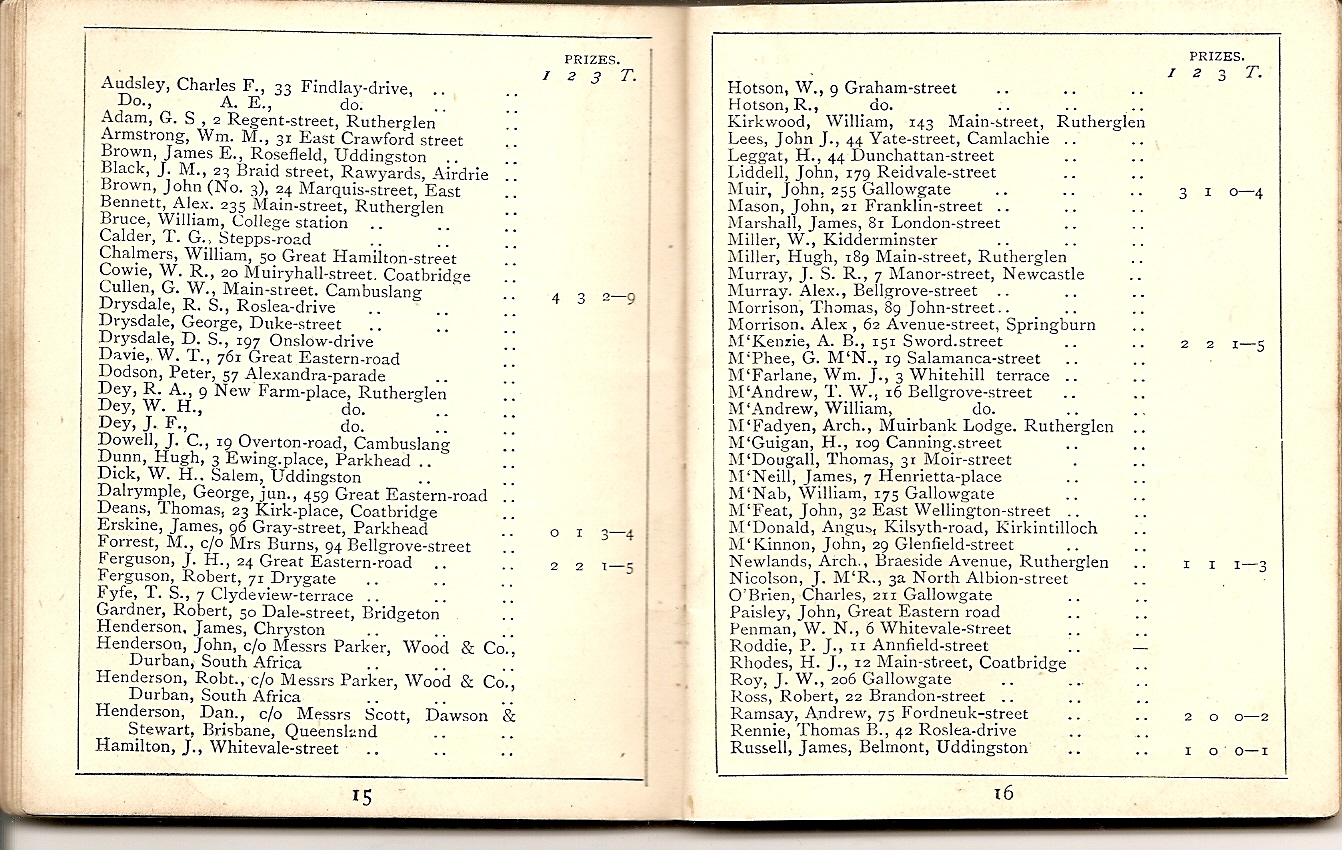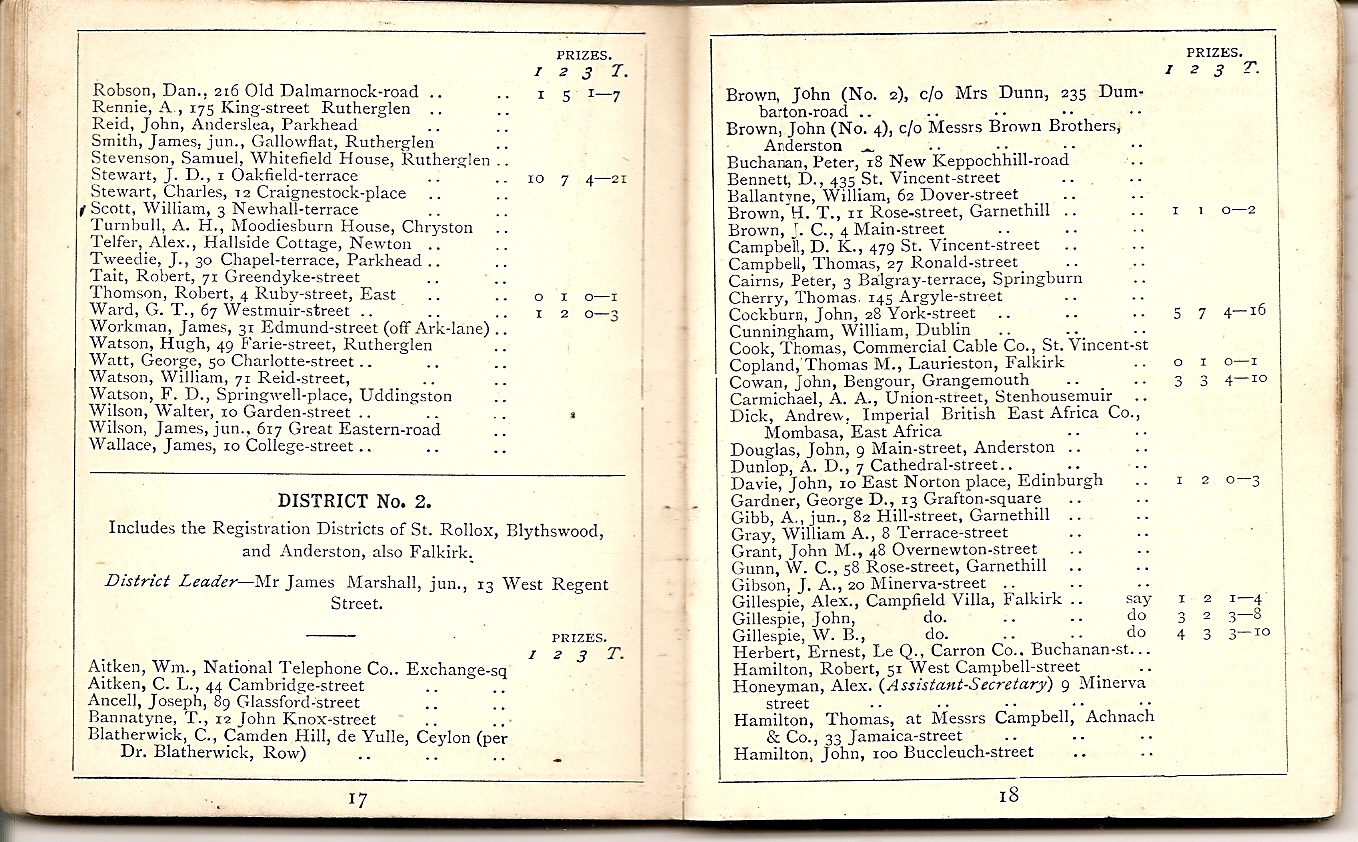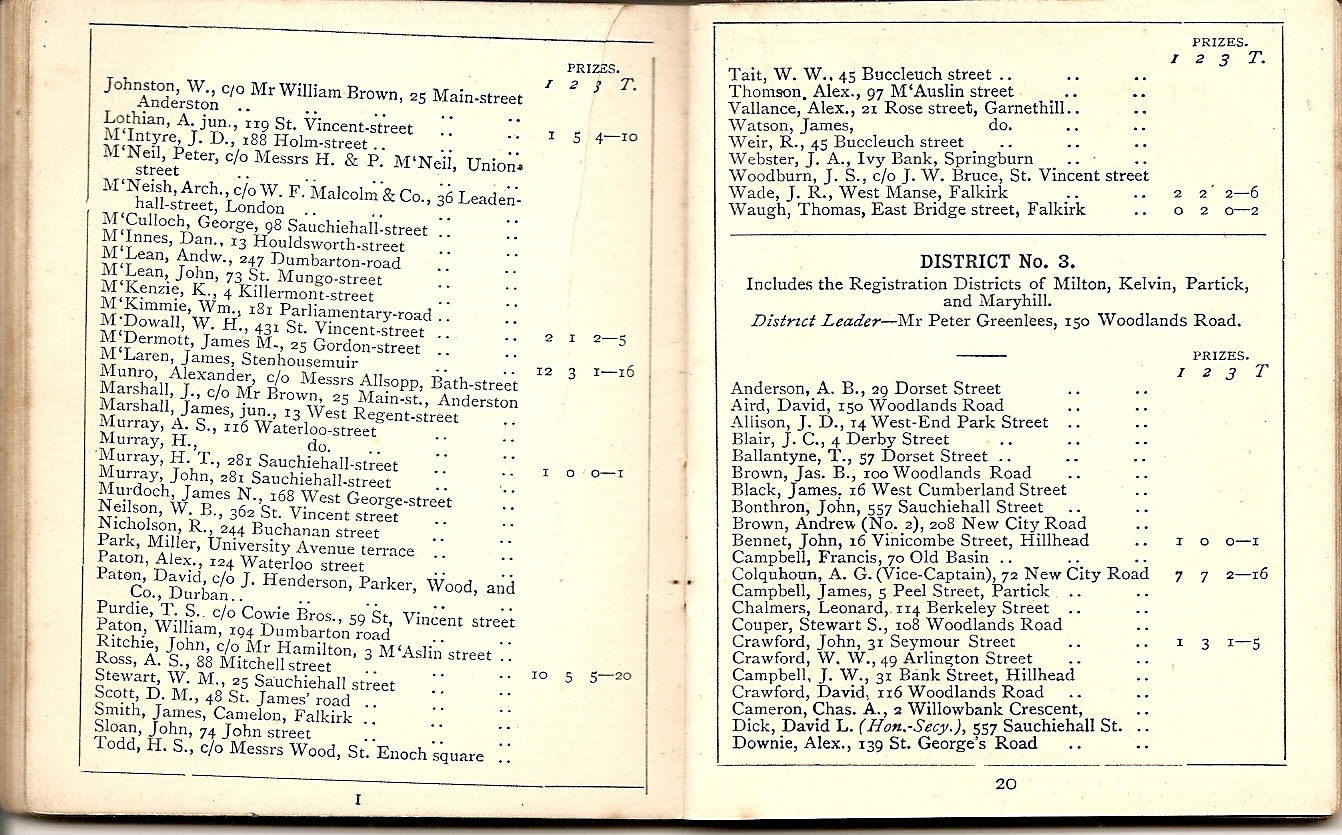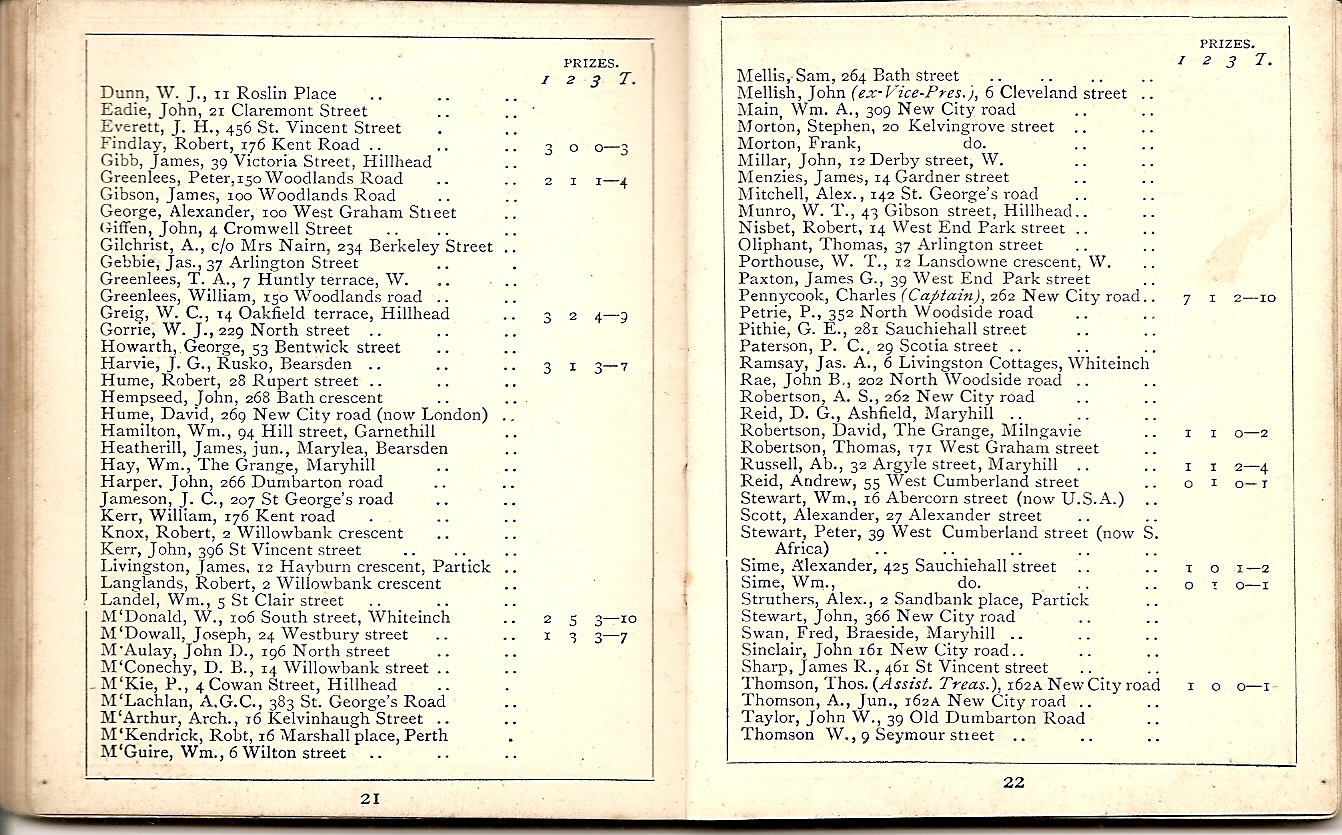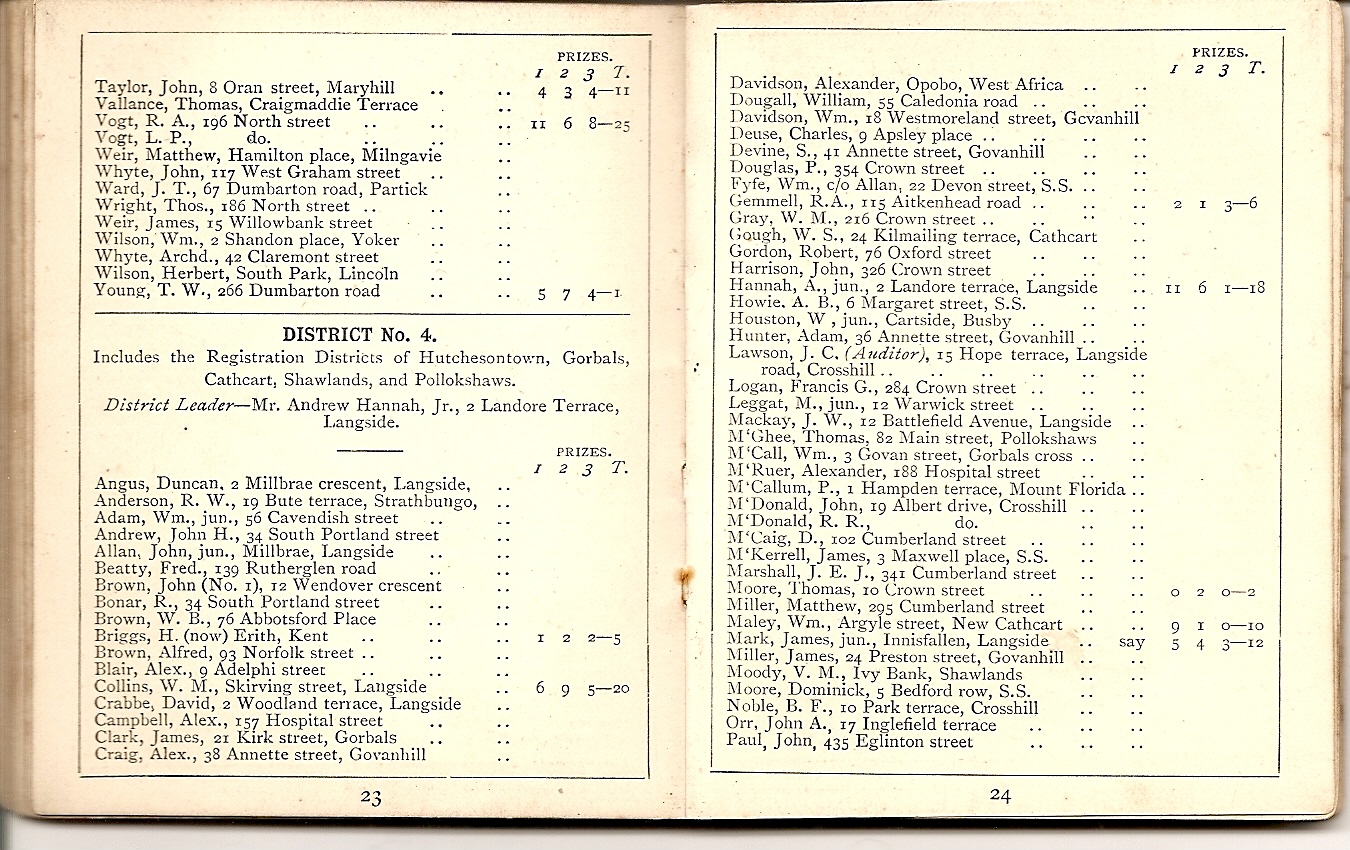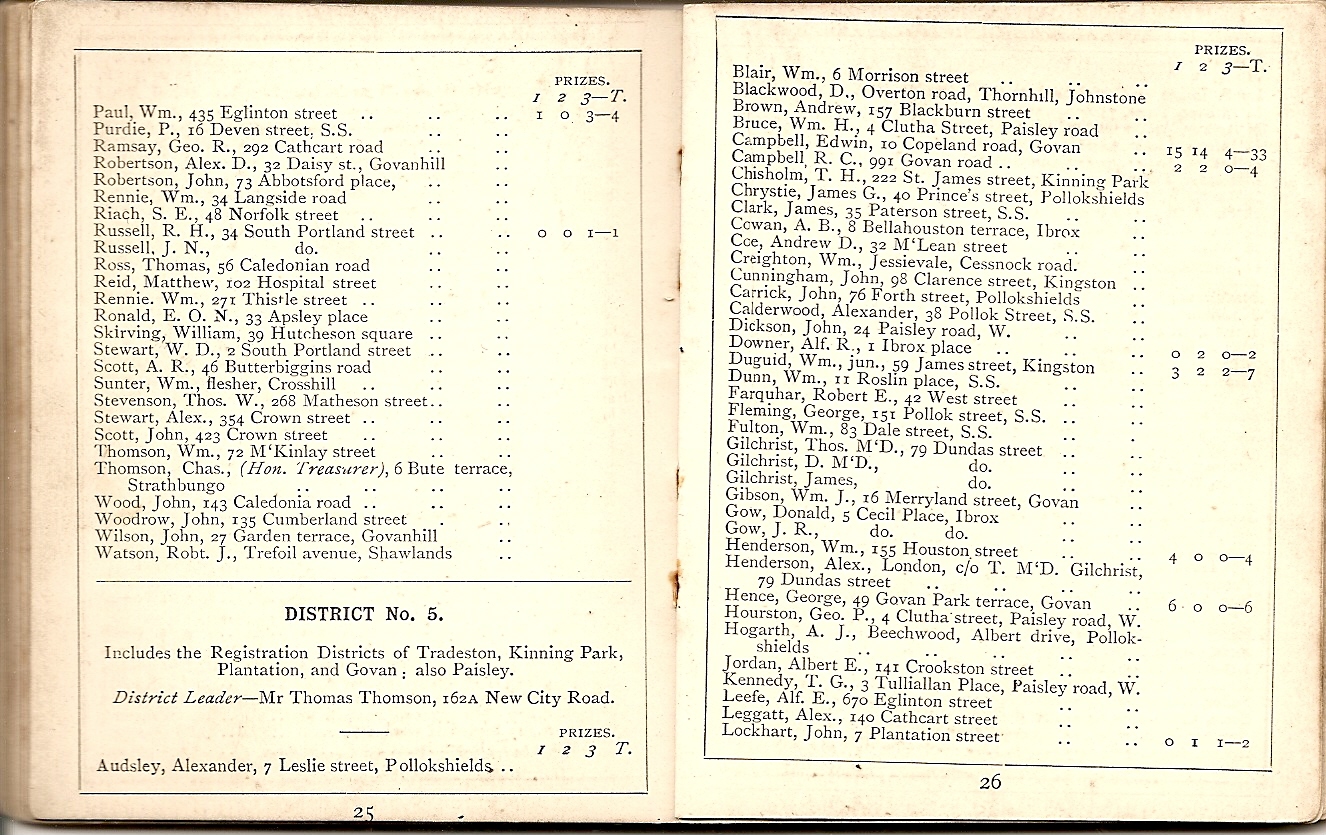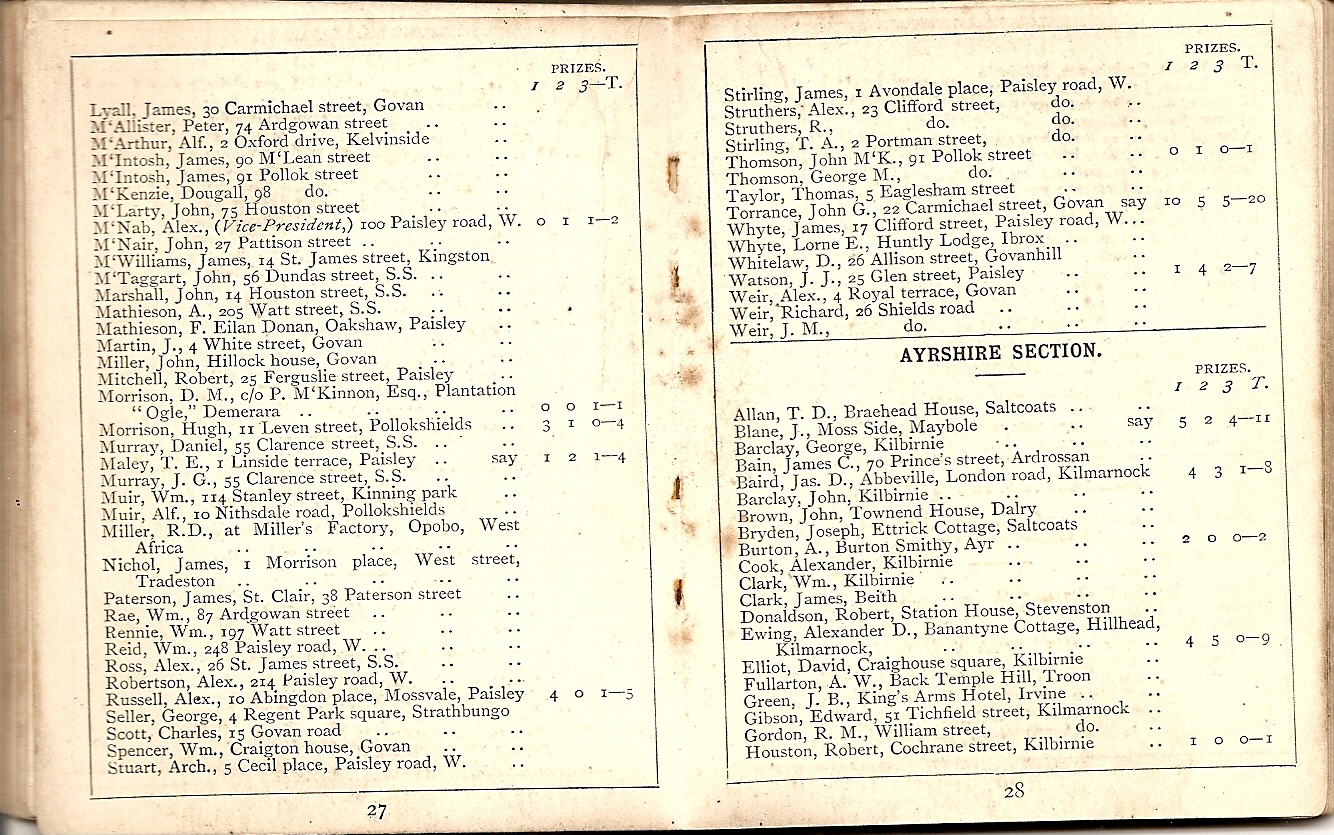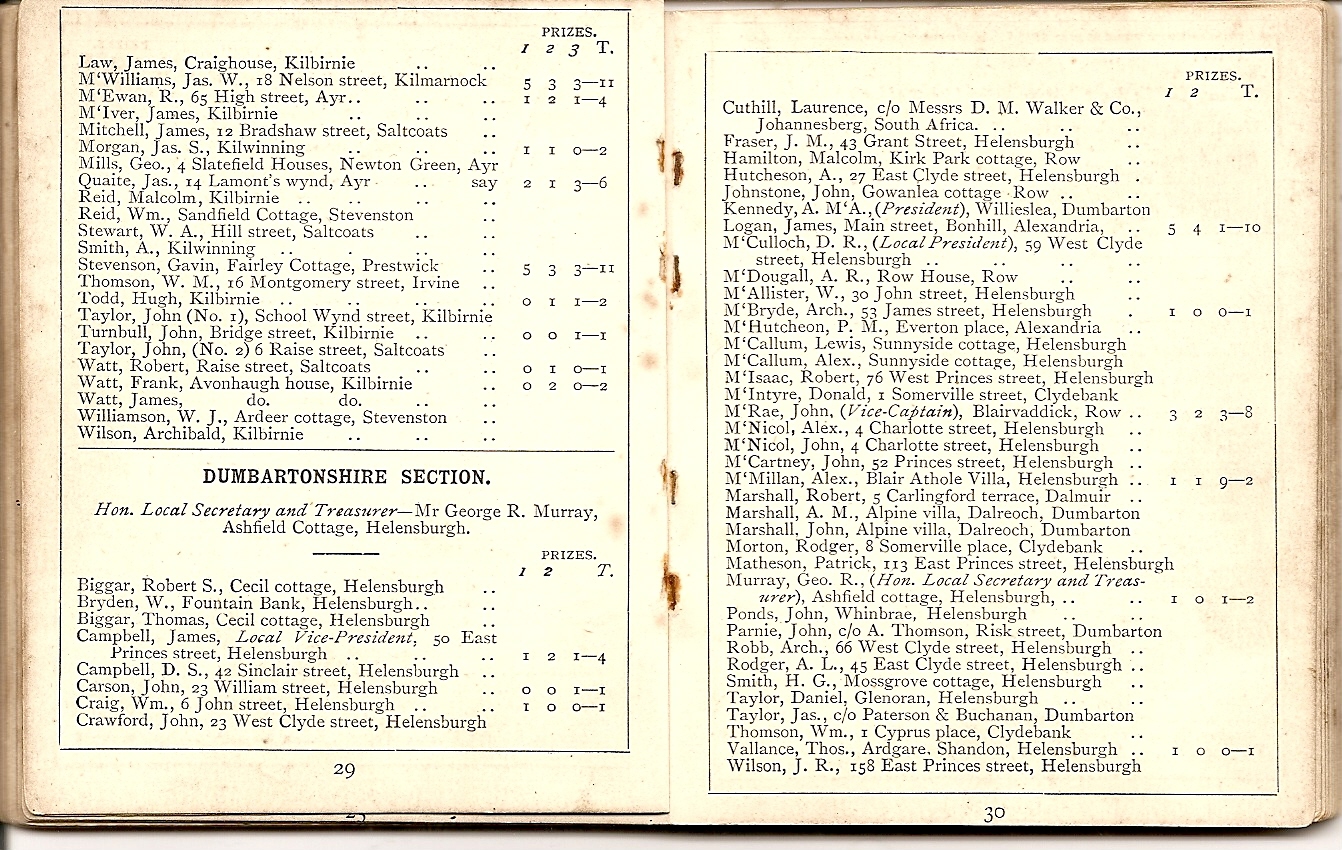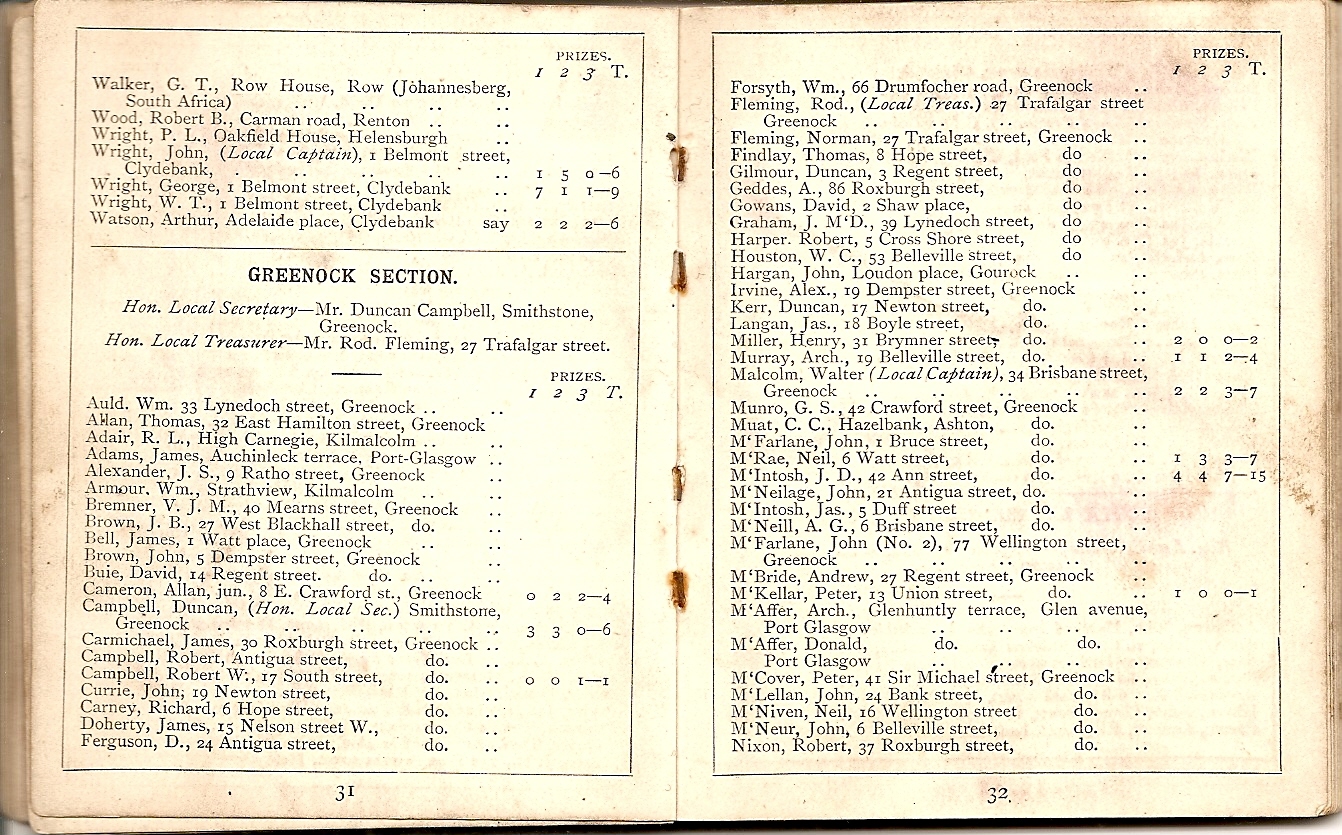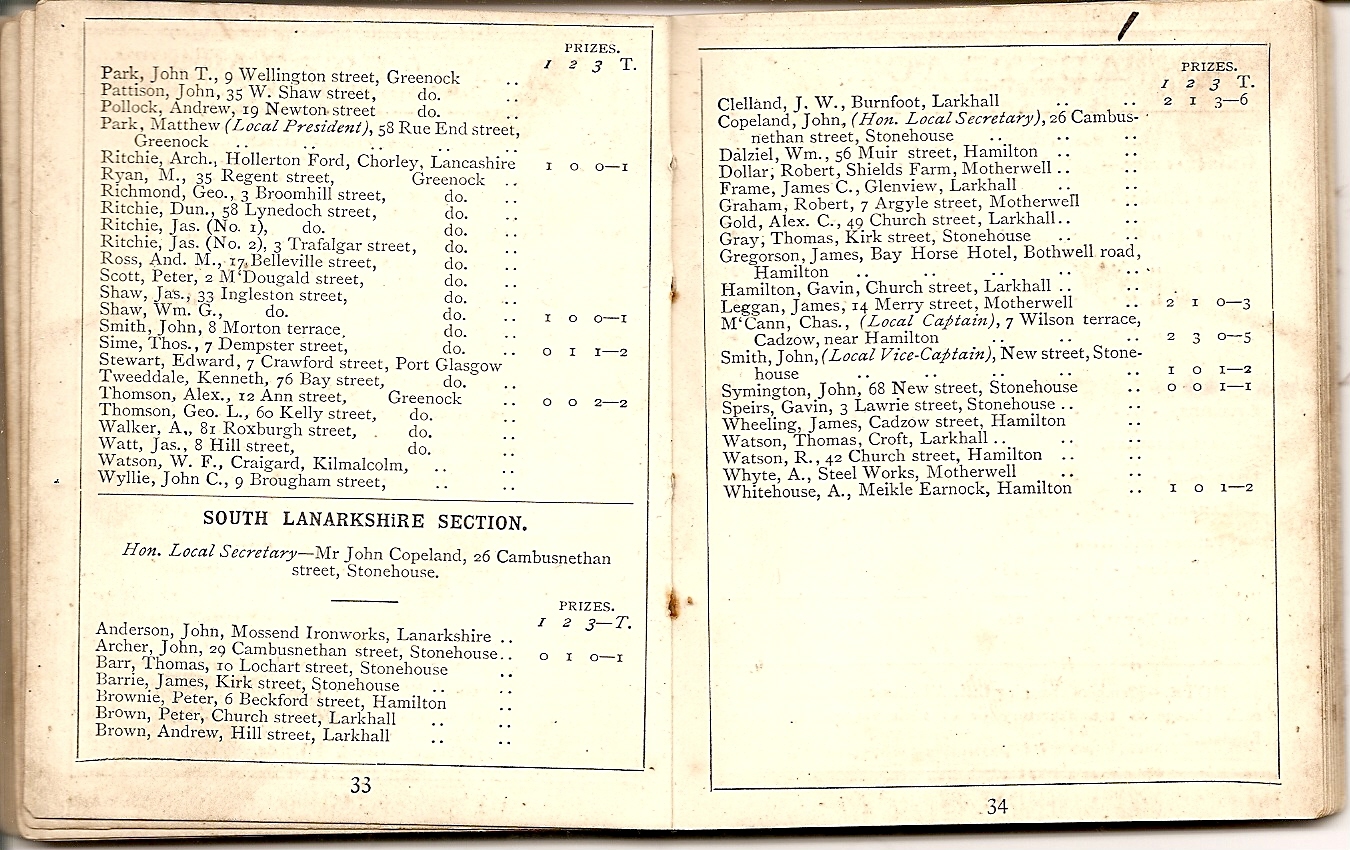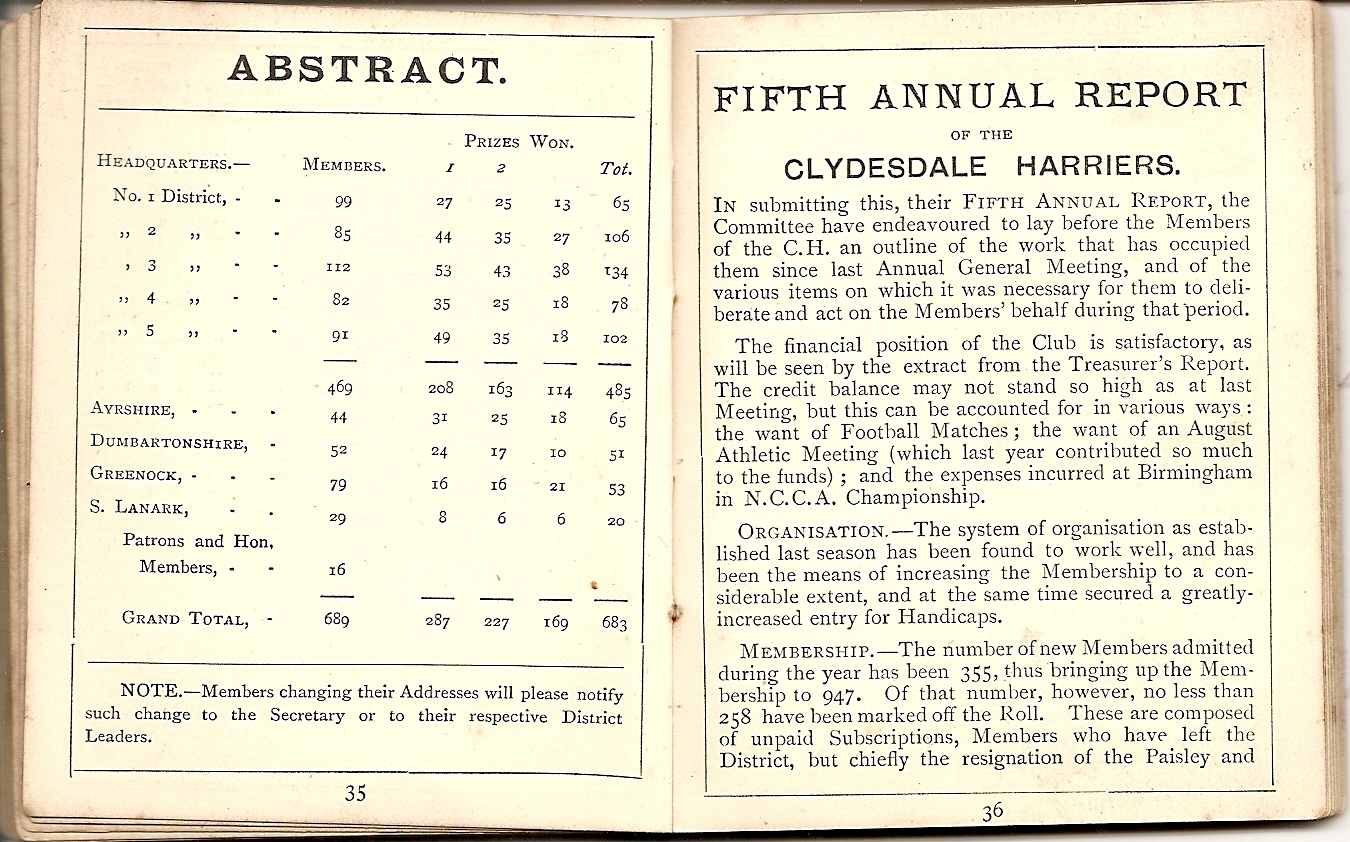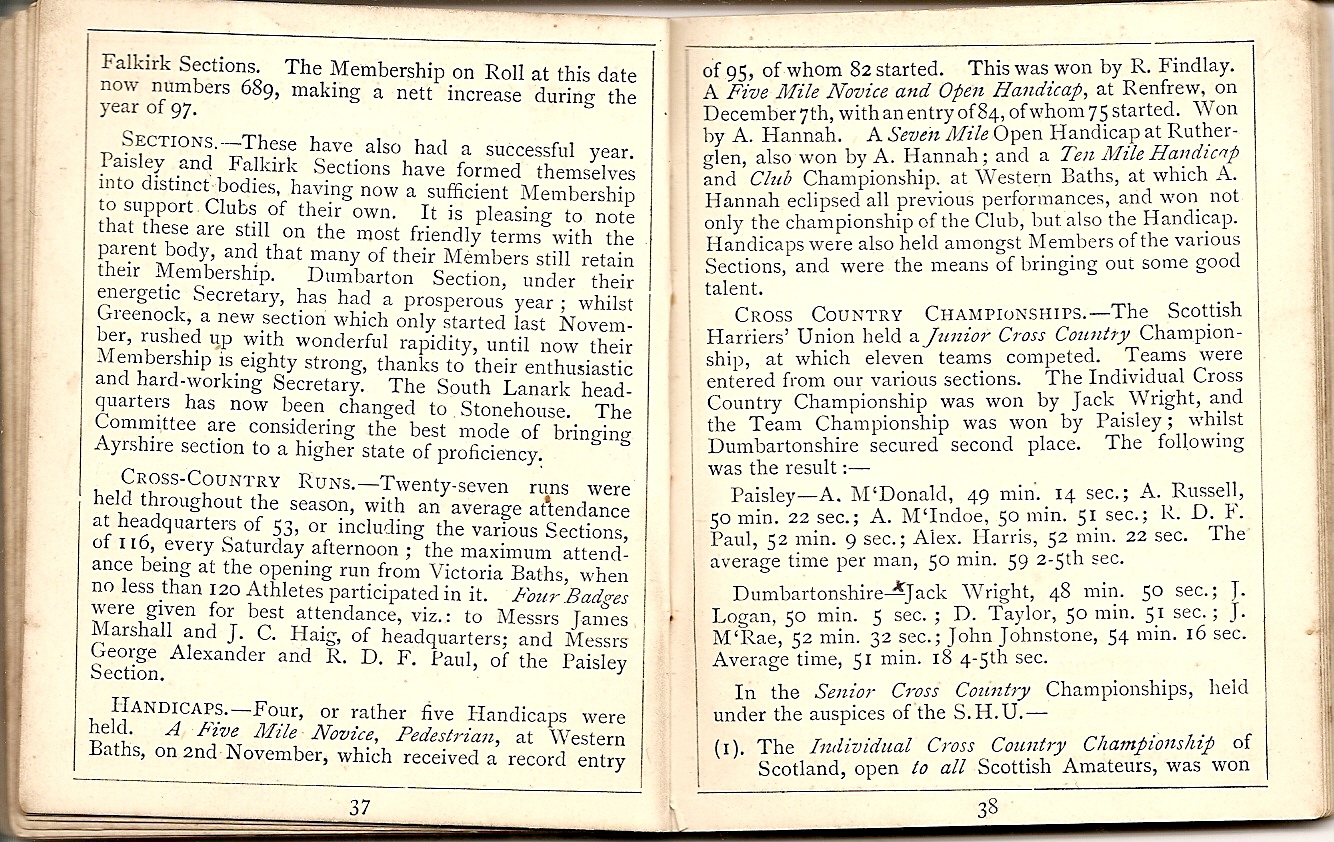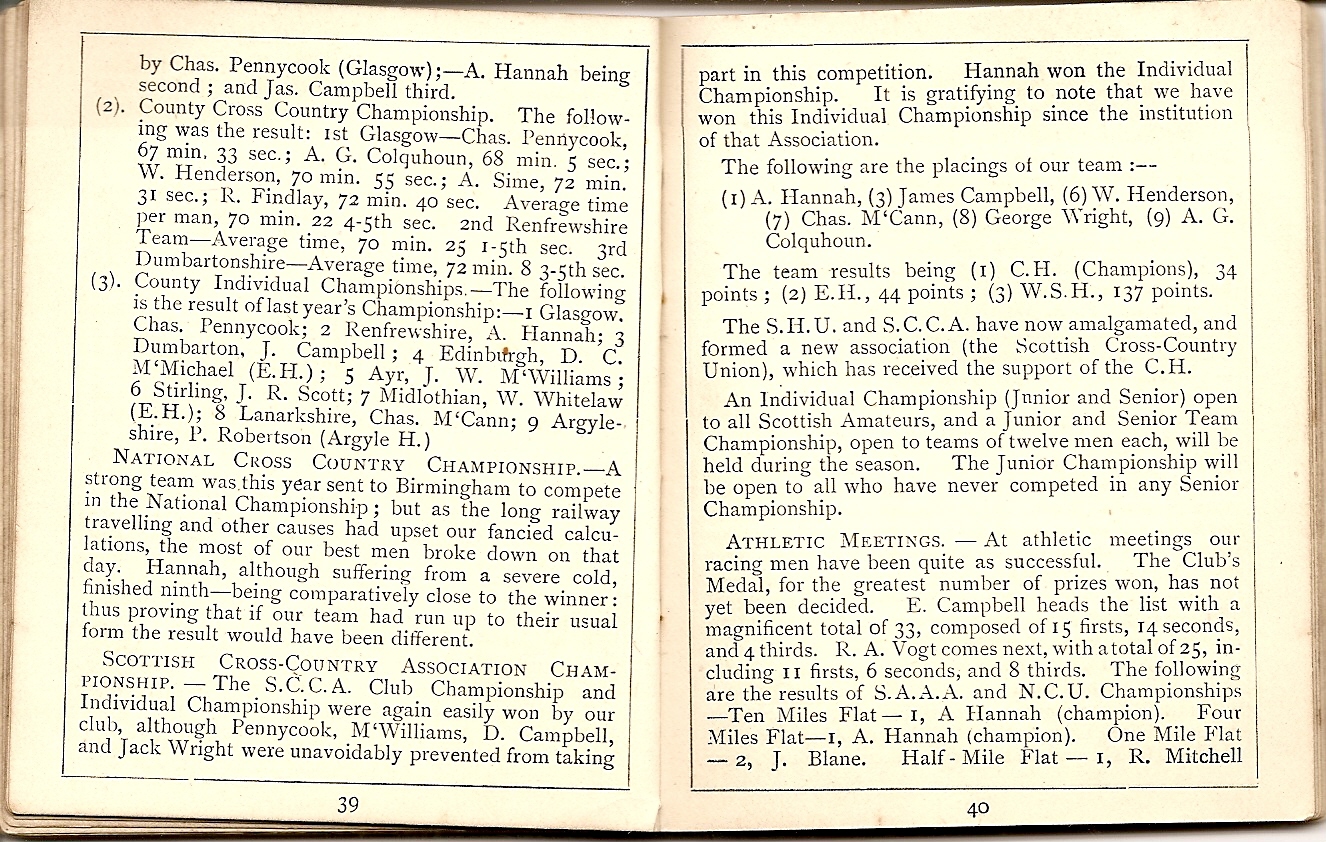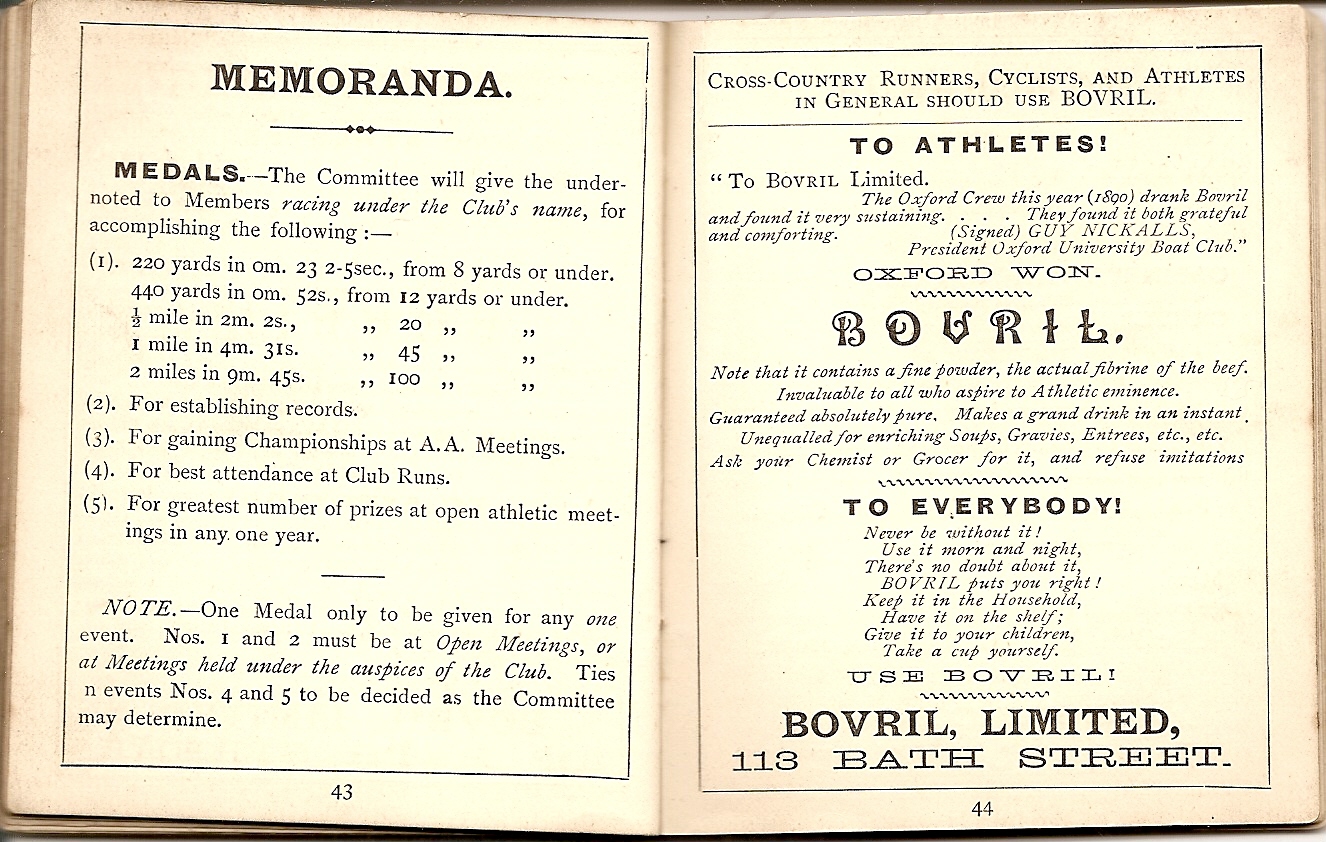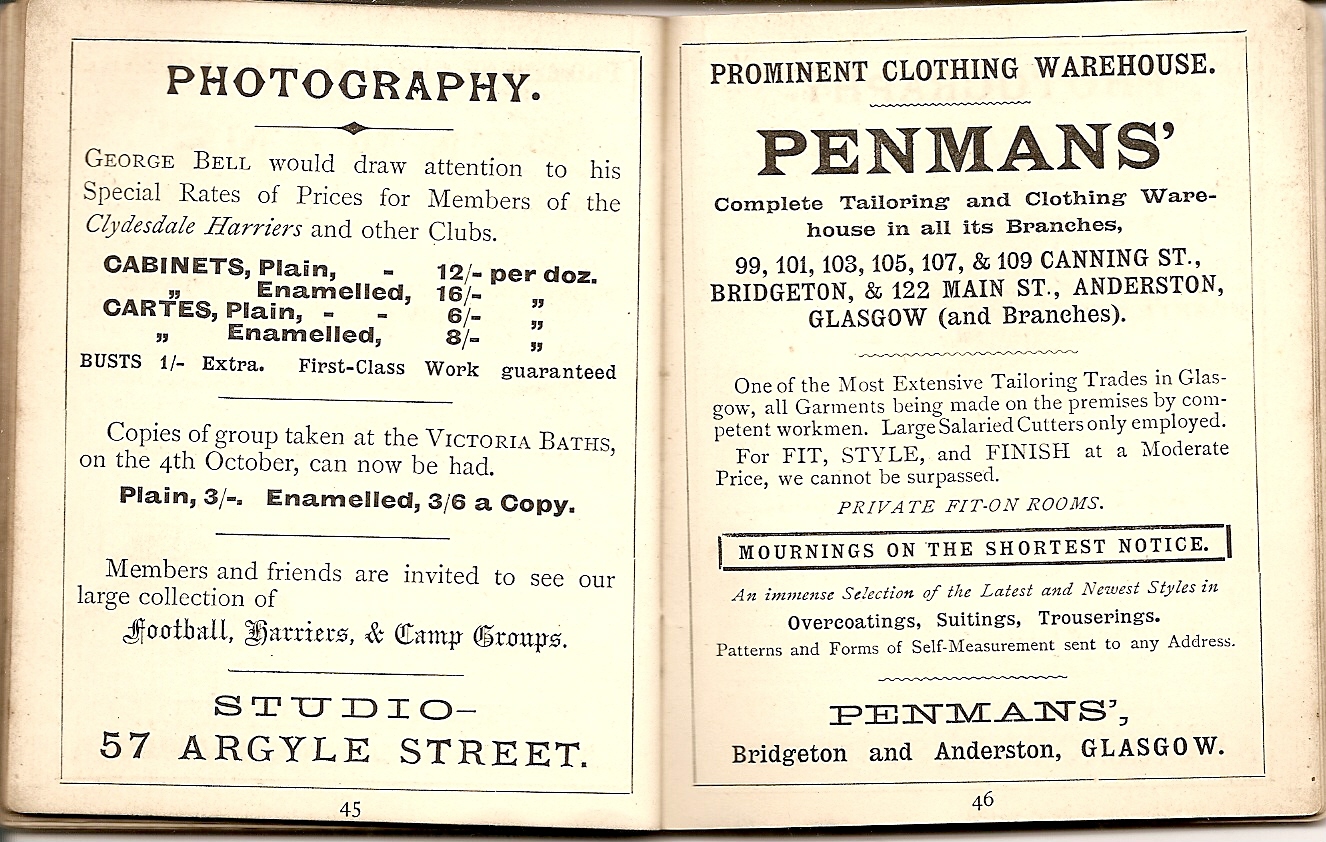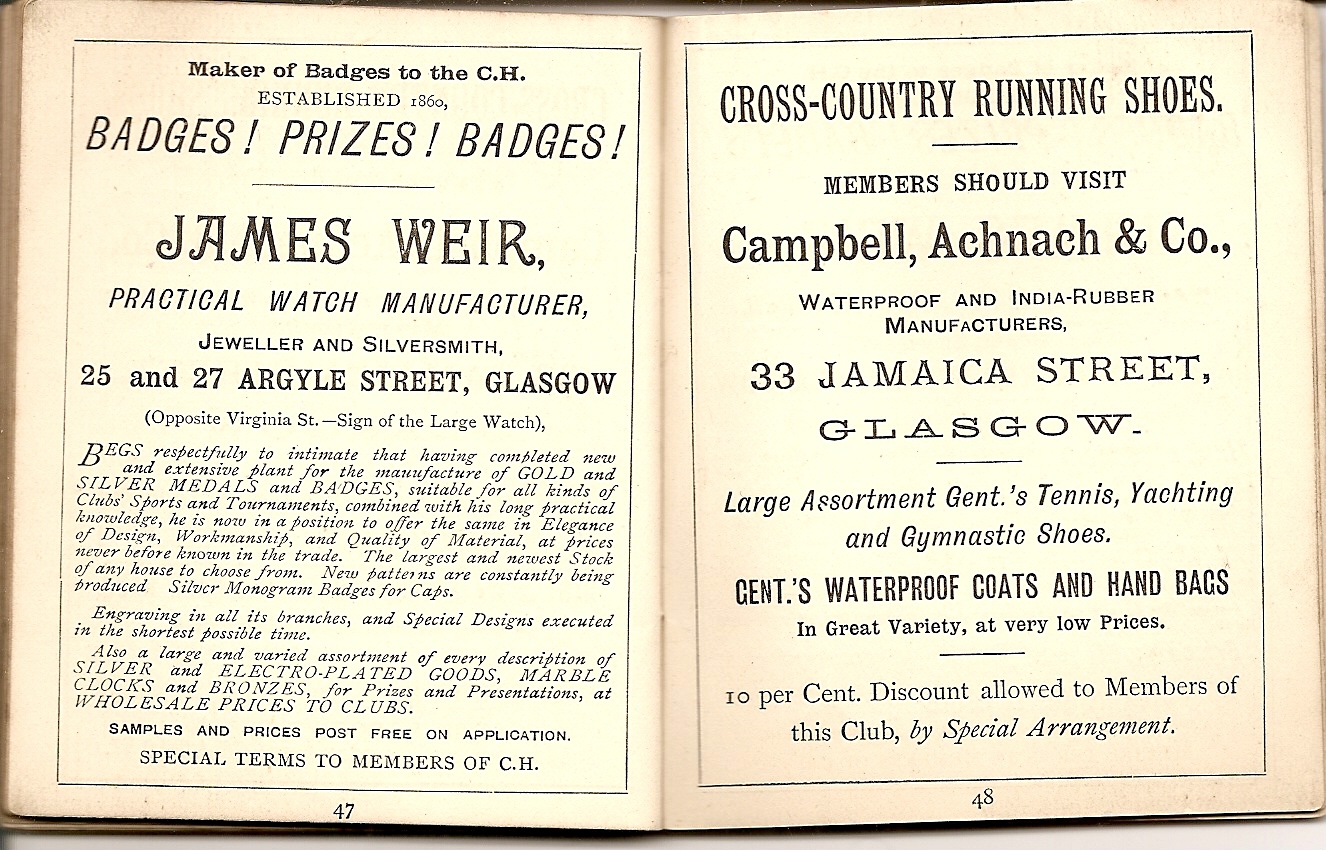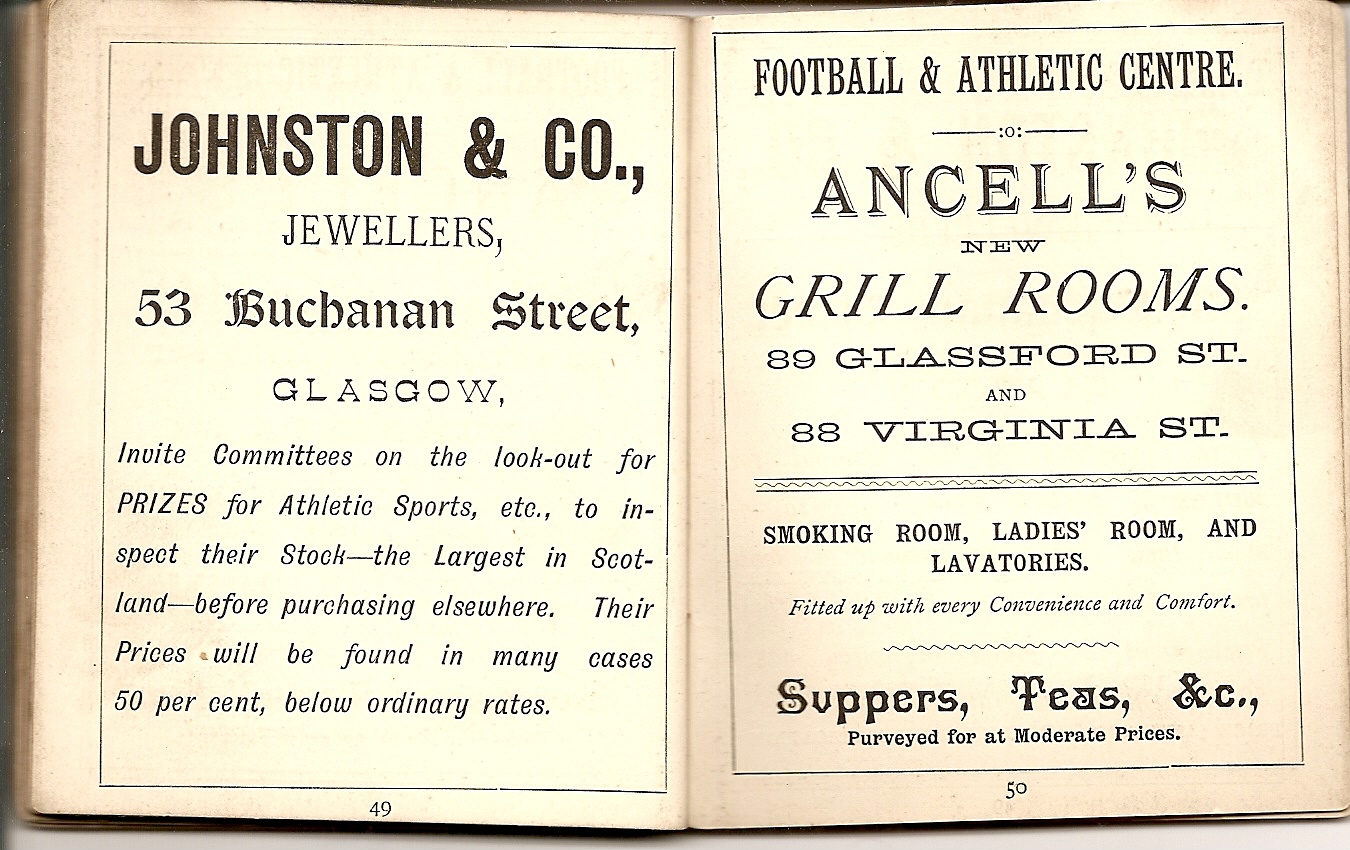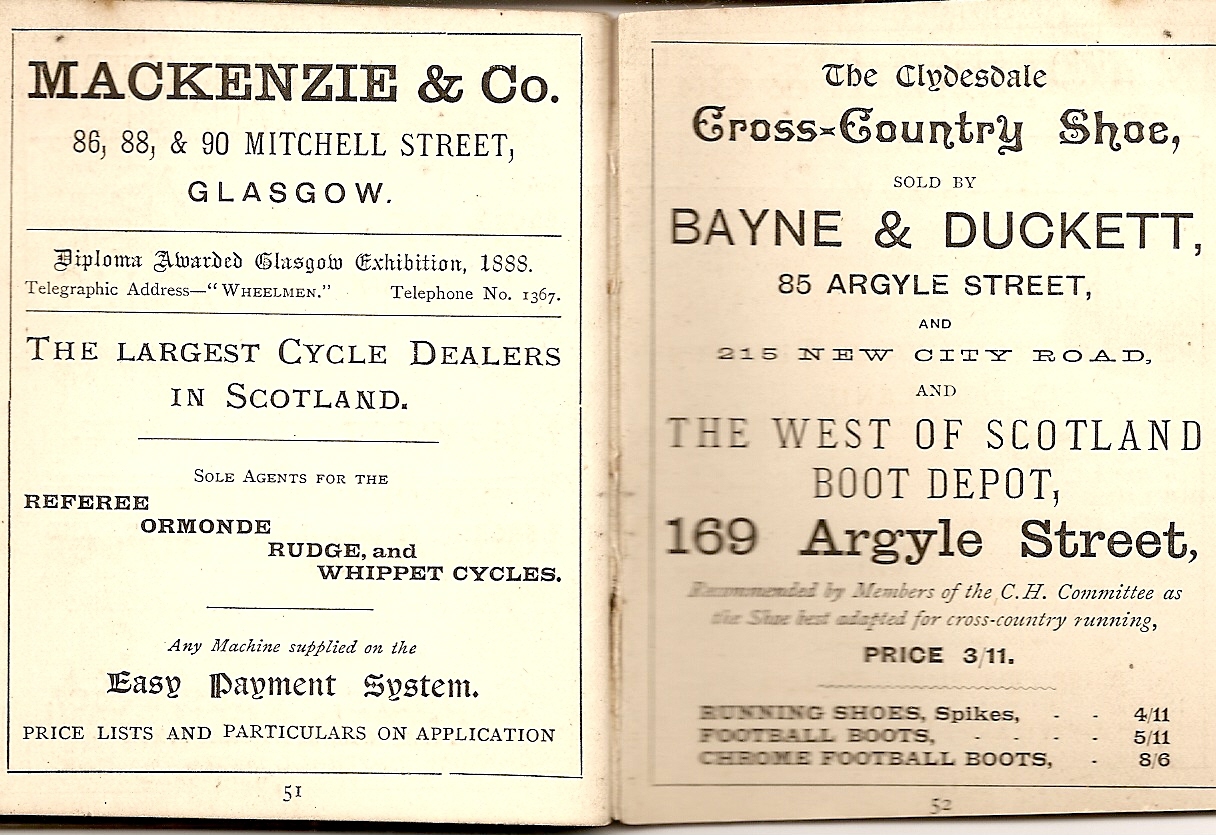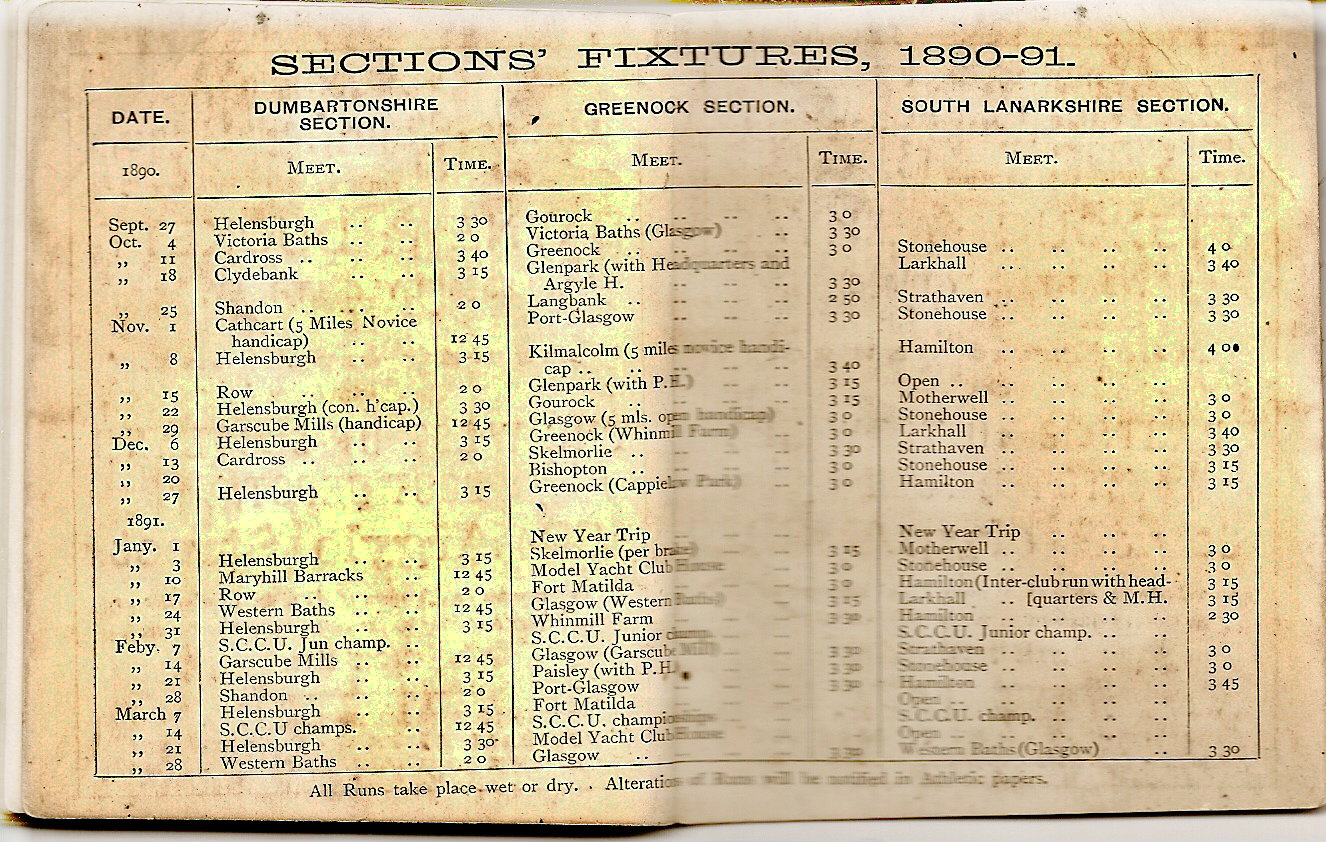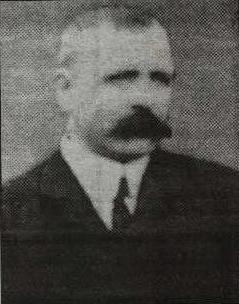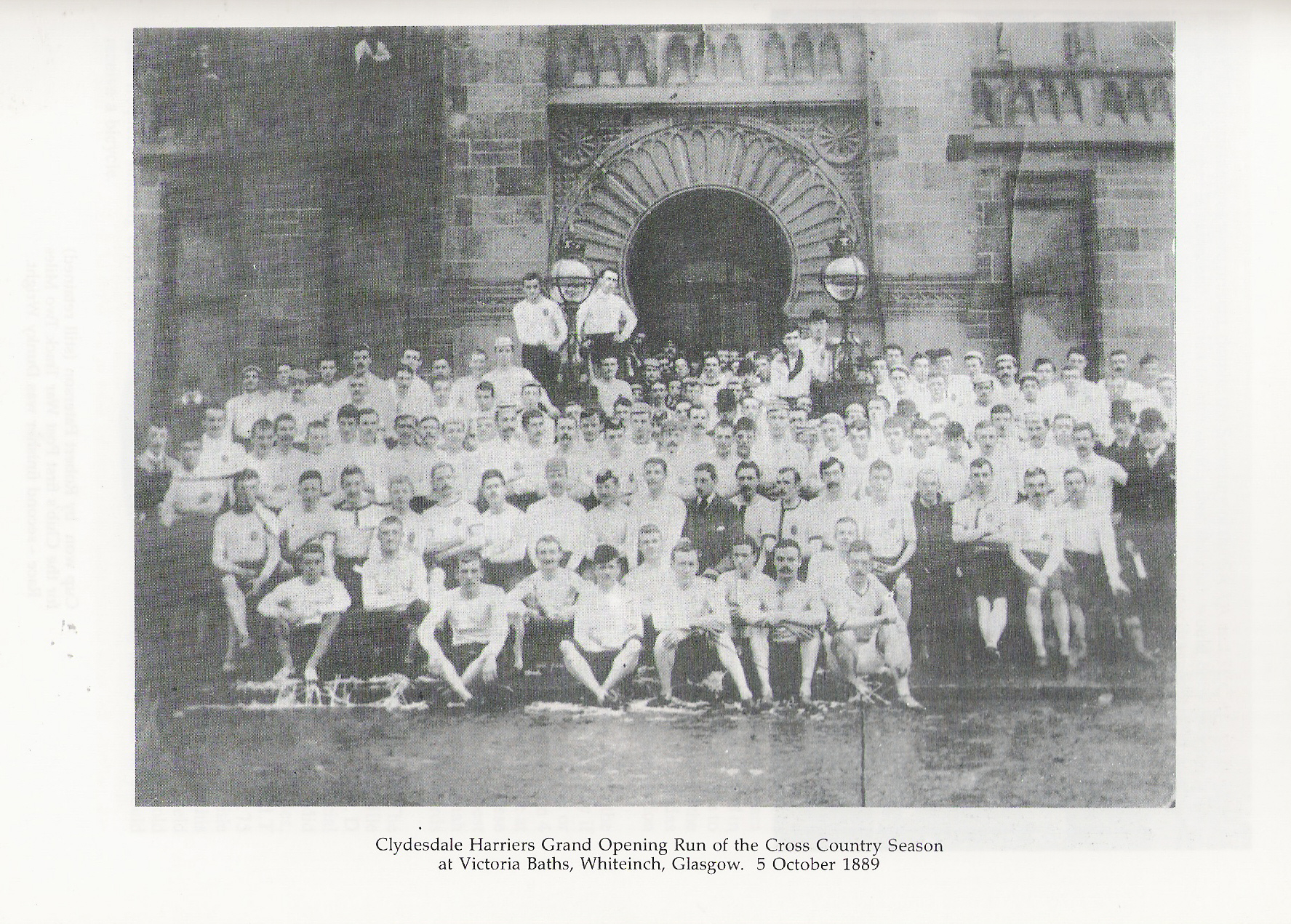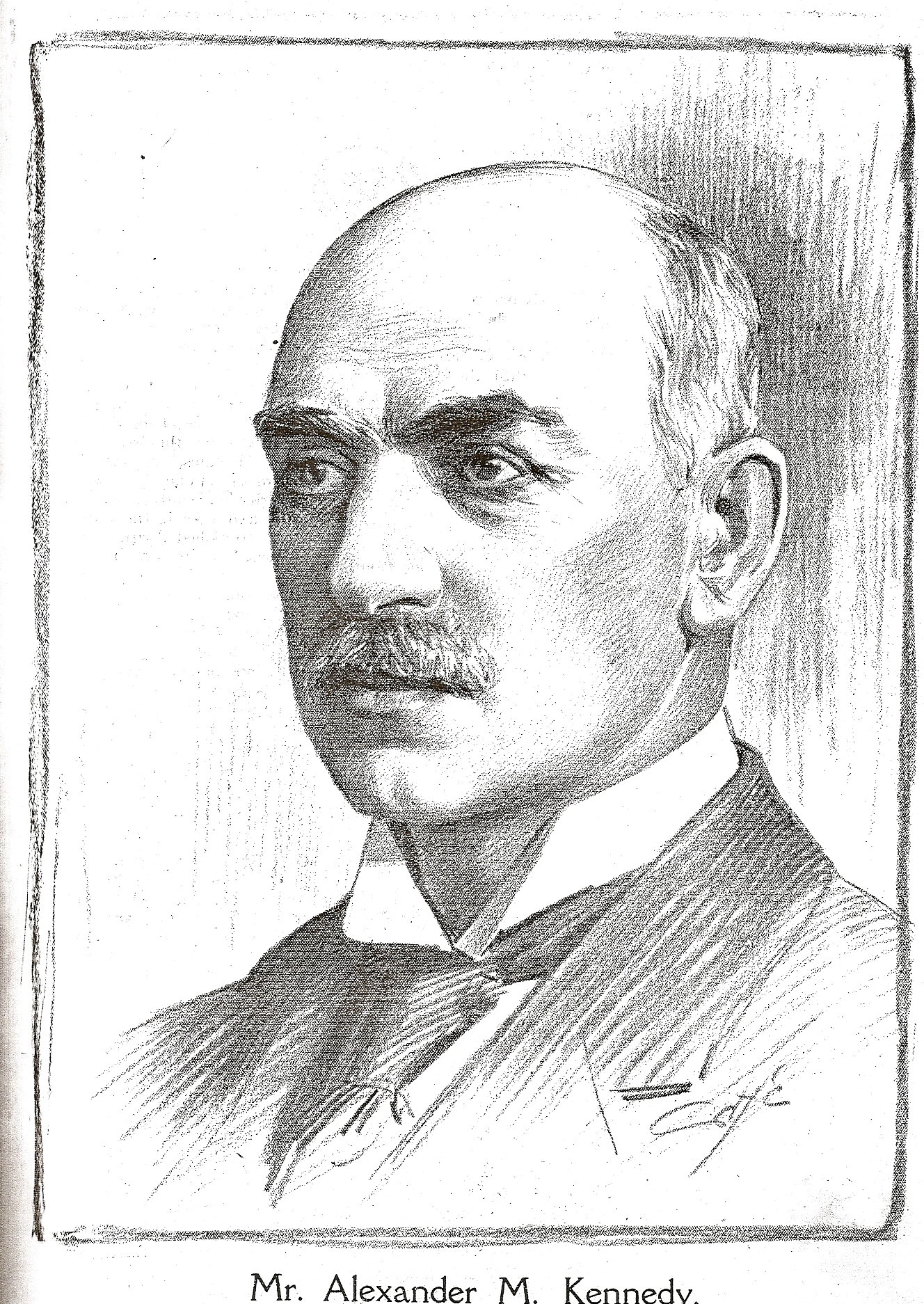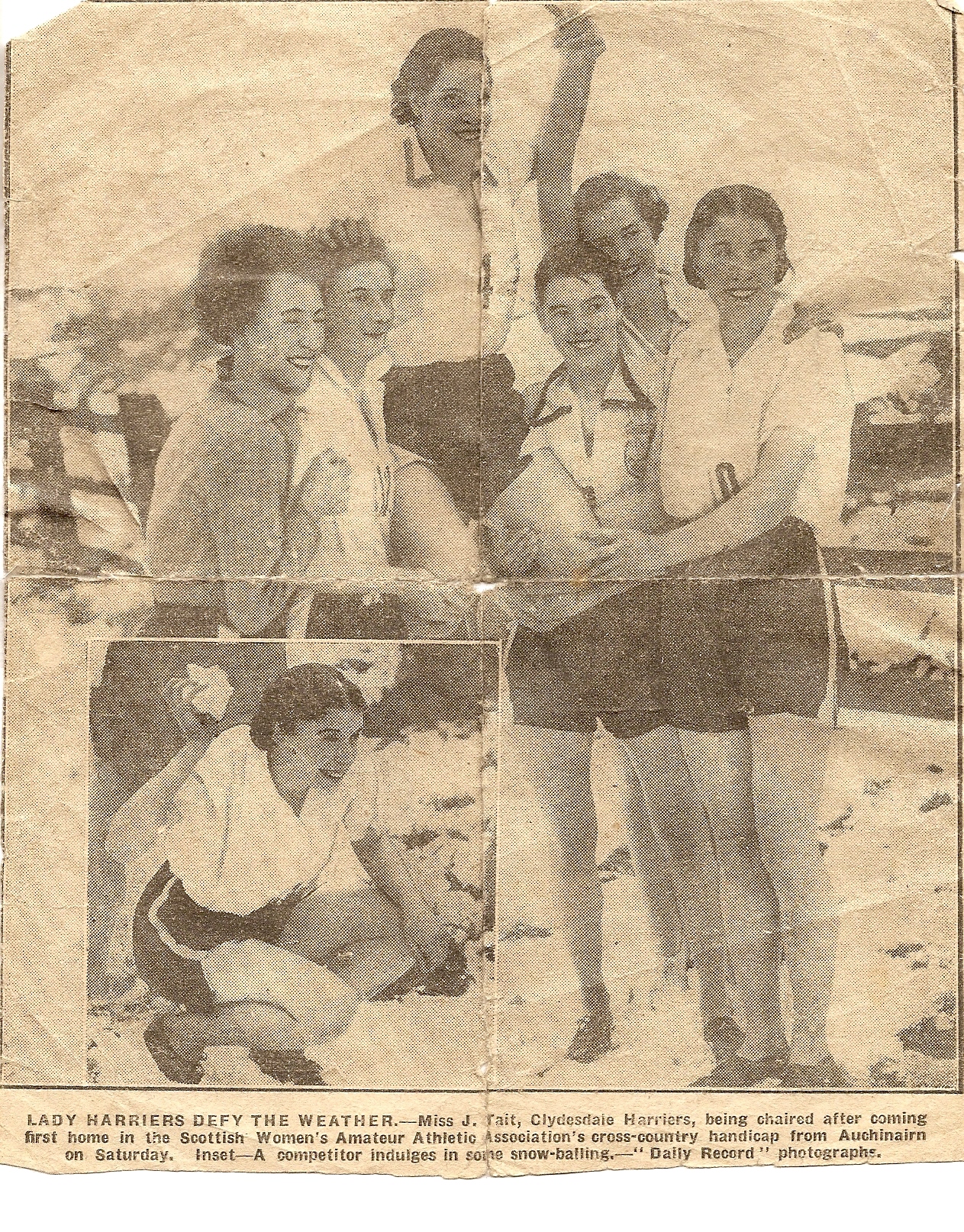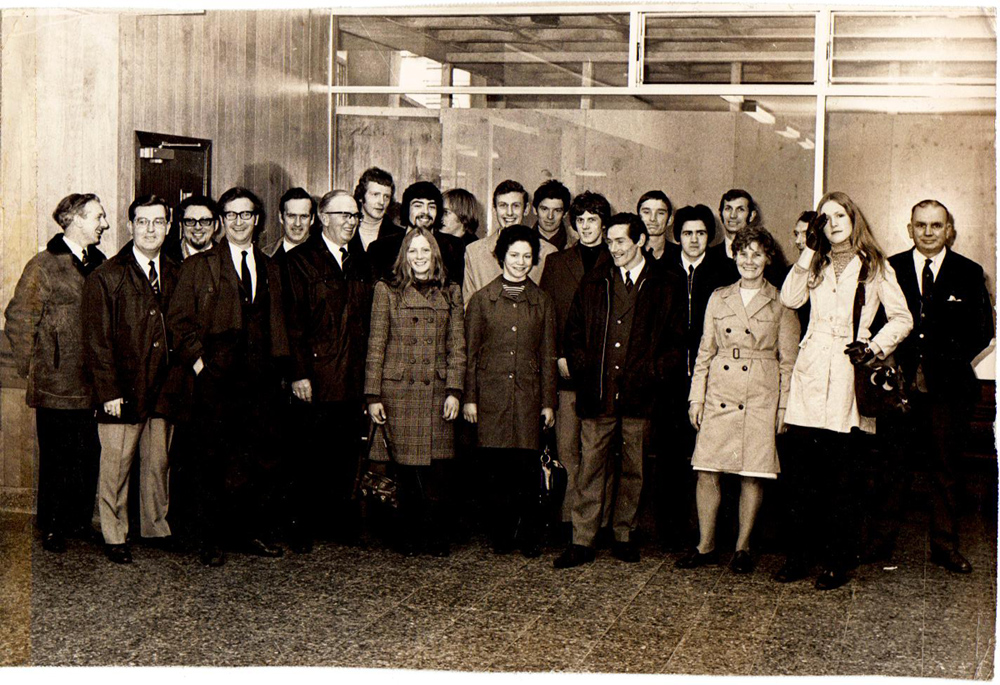
Joint Men’s and women’s teams heading for the IAAF Cross in the mid 1970’s
SCOTTISH WOMEN IN THE IAAF WORLD CROSS
The ICCU Cross-Country Championships took place from 1935 to 1972 and Colin Youngson has compiled a Who’s Who of Scottish women who ran in that event which can be reached by clicking on the link. It should be regarded as a companion piece to this article which completes an invaluable reference work. There is nothing which has been attempted that is so comprehensive and between them they fill a void in Scottish Women’s Cross-Country history. Colin writes:
Cross-country running is a traditional sport: a true test of endurance and resilience; meeting such a difficult challenge certainly forms character! Although the population of Scotland is small compared to many other countries, including England, Scottish International cross-country runners work very hard for selection and race even harder. Naturally, some have more talent than others and, assuming they have trained properly and have strong race day nerves, probably finish higher in the results. However every person named in this article deserves considerable respect.
For Scottish teams, the ICCU International Championships started in 1935 with only one opposing outfit. By 1972, up to 18 teams were competing. Once the IAAF World XC Championships started in 1973, even more countries took part. By 1987, the record number of nations competing had risen to 28. Obviously, this meant a higher standard and truly world-class competition. Scottish Women (and Men) found it increasingly difficult to shine, especially against Russian, American or African opponents but, despite this, often ran well and always did their best on the day. Who can ask for more?
Between 1973 and 1987, Scottish teams took part in the annual IAAF World Cross Country Championships. From 1988 onwards, Scots could only participate as part of a British (United Kingdom) team. There were three types of event for Women during 1973 and 2017: Senior Women Long Course; Junior Women (under 20 years of age, from 1989 onwards); and between 1998-2005, a Senior Women Short Course.
The first IAAF World Championships was held in 1973 in Waregem, Belgium. 75 started and Scotland finished 9th team from 13, in front of Wales, France, Spain and Netherlands. Christine Haskett had won the Scottish National Senior title, but was beaten in the Worlds by her constant rival Margaret Coomber, who was 19th to Christine’s 27th. Ann Barrass finished 38th and Moira O’Boyle 43rd.
Moira O’Boyle was a precocious, determined young athlete who had won the 1973 Scottish Intermediate XC title. Aged only sixteen, she was selected for the Senior Women’s race in the 1973 World XC Championship. In 1974 Moira O’Boyle won the Senior National XC, beating Christine Haskett and Ann Barrass. She had won bronze and silver medals in the SAAA 3000m in 1972 and 1973. Eventually her family moved from Glasgow to Belfast and Moira (later Moira O’Neill) became Northern Irish marathon record holder (and champion three times) and ran for NI in two Commonwealth Games marathons, finishing 8th in 1986 and 12th in 1990. She won the Belfast and Dublin marathons and her fastest time was an impressive 2.37.07.
In 1974 the World Championships took place in Monza, Italy. There were 69 competitors. Mary Stewart ran a tremendous race to finish 8th (4th Briton); Christine Haskett was 33rd, Margaret Coomber 39th and Moira O’Boyle, the Scottish Champion, 43rd. The Scottish team finished 8th, beating four countries – France, Spain, Ireland and Wales.
Rabat, Morocco, was the 1975 venue. 71 ran. Mary Stewart repeated her excellent 8th position (with the same time as the leading British runner, England’s Ann Yeoman 7th), with Scottish Champion Christine Haskett 23rd ((6th Briton), Margaret Coomber 42nd and Ann Barrass 56th. The Scottish team finished 10th, beating Australia, Wales and Morocco.
The 1976 World Championships took place in Chepstow, Wales. 69 ran. Once again, Mary Stewart was first Scot in 9th place (second Briton). Scottish Champion Christine Haskett finished 23rd (4th Briton), Moira O’Boyle was 41st and Margaret Coomber 54th. The Scottish team was 9th, beating Spain, Finland and Wales.
Dusseldorf, West Germany, was chosen for the 1977 World Championships. 96 ran. Margaret Coomber (52nd) beat Scottish Champion Christine Haskett (61st). Judith Shepherd finished 65th and Gillian Hutcheson 86th. The team was 16th, in front of Wales. The medallists were: Soviet Union, United States and New Zealand.
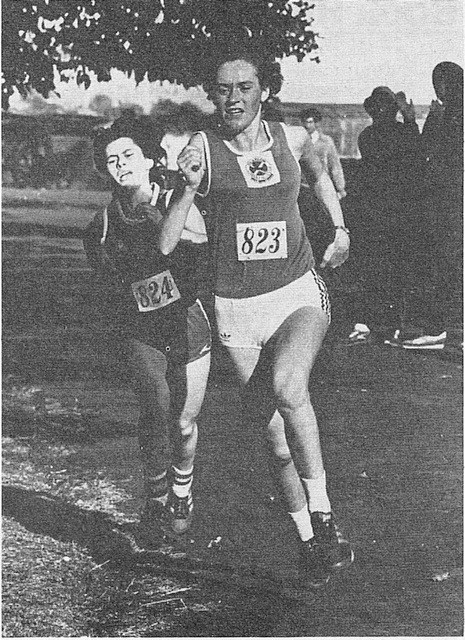
Judith Shepherd (above) was newly 18 when she ran the 1977 World XC. She was to be SAAA 3000m track champion from 1977 to 1979; break the Scottish record for that distance; and win Scottish National XC titles in 1978 and 1979.
The 1978 event was in Glasgow, at Bellahouston Park in wet, muddy conditions. 99 ran. Scottish Champion Judith Shepherd performed very well to be first Scot in 22nd place (5th Briton). Margaret Coomber was 69th, Scottish Intermediate XC winner Fiona McQueen 79th and Janet Higgins 87th. The team finished 16th, beating Wales and Italy.
Fiona McQueen won the Scottish Intermediates XC titles in 1977 and 1978. In 1983 she was first in the Senior National. On the track she became 1981 SAAA 3000m champion.
Violet Hope was Scottish 1500m champion in 1980 and 1983.
Limerick, Eire, was the venue in 1979. 100 ran. Judith Shepherd, Scottish champion once again, finished 44; Fiona McQueen 57th; Kerry Robinson 67th; and Margaret Coomber 82nd. The Scottish team was 14th, beating Wales and Northern Ireland.
In 1980 the World Cross took place in Paris. Scotland had a new champion – Christine McMeekin – and she ran very well indeed to finish 18th (and fourth Briton) from 104 competitors. Fiona McQueen was 73rd, Barbara Harvie 79th and Margaret Coomber – in the last of her fantastic fourteen successive International Cross Country appearances for Scotland – still a counter in 88th place. The team was 15th, just behind Netherlands and Denmark but in front of Wales and Northern Ireland.
Christine McMeekin (later Christine Whittingham) had a twin sister, Evelyn, and an older brother David. All three were outstandingly successful Scottish International athletes and took part in Commonwealth Games. Christine won several SAAA titles including: 800m (thrice); and Indoor 600m (twice). She ran 800m in the 1976 Olympics; and twice raced 1500m in the Commonwealth Games – in 1978 (when she finished fourth) and in 1986. She won two 1500m silver medals in 1986 – in the AAA and UK championships.
Sonia McLaren (later Armitage) was a versatile, durable athlete. In addition to her 1980 World Cross appearance, she secured two bronze medals in the SAAA 3000m in 1979 and 1983; won the 1996 Scottish Hill Running championship; ran for Scotland five times in the World Hill Running Cup and once in the European event; was first in the Scottish Indoor 1500m in 2010; and won four World Masters titles – Hill Running (W40 in 2001), Indoor 800m (W45 in 2010) and Indoor 1500m (W45 in 2008 and 2010).
The 1981 International was held in Madrid, at an altitude of 2200. Spanish athletes think that this makes running more difficult! The 4400m course was on a racecourse with a testing switchback section. Certainly the British did not do well that day. 118 ran. Christine Price (who had switched clubs to Bolton United Harriers) finished 68th (6th Briton), Lynne MacDougall was 75th, Yvonne Murray 79th and Scottish Champion Alison Wright 95th. The team was 19th, in front of Angola. However the Scots included two sixteen year olds: Lynne and Yvonne, plus newly 17 year old Linsey Macdonald.
Lynne MacDougall. Lynne won the Scottish Intermediate XC in 1982 – a year after her Senior World Championship debut! She won the Scottish Senior National XC in 1985. On the track she won Scottish titles at 3000m (twice) and 1500m (five times). In 1984 she ran 1500m for GB at the Olympics and finished 11th in the final. Lynne also competed in the European Indoors twice and in the Commonwealth Games 1500m in 1986 (8th) and 1990 (5th). In 1989 she became UK 1500m champion and was twice second in the AAA Indoor 1500m. Her long career ended in 2002, when she topped the Scottish marathon rankings with a very good 2.36.29.
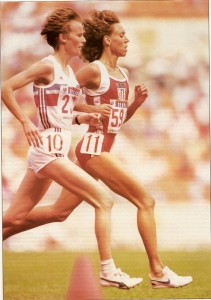
Yvonne Murray (above) enjoyed a superb career. Although she shone as a schoolgirl cross country runner and won the Intermediate National in 1981, the track was her best surface. As well as winning five Scottish titles (at distances between 800m and 3000m), Yvonne was AAA champion six times (1500m and 3000m) and UK champion twice (3000m and 5000m). She competed in four Commonwealth Games (winning the 10,000m in 1994); four European Championships (winning the 3000m in 1990); four World Championships; two World Indoor Championships (1993 gold in the 3000m); and two Olympic Games (including a 3000m bronze medal in 1988). Yvonne set many new Scottish records and was a truly great athlete.
Alison Wright had run 800m in the 1978 Commonwealth Games for New Zealand. Then she switched to Scotland and in 1981 won the Senior National XC and the SAAA 1500m.
Linsey Macdonald, it is fair to say, would not have considered cross country her best event. However she was immensely talented on the track and at 16 years of age ran in the Moscow Olympics 400m (8th in the final) and then helped GB to a bronze medal in the 4x400m Relay. Injuries may have troubled her, but Linsey competed in the 1982 European Championships and Commonwealth Games (making an important contribution to Scotland’s 4x400m bronze). She also took part in the 1986 Commonwealth Games. Linsey was third in the 1982 AAA 400m. Scottish championships were won too: 100m and 200m in 1981; and 400m (1985). In addition she secured two 800m silver medals in 1987 and 1988, as well as Indoor 800m silver in 1990.
The 1982 World Cross was held in Rome. 109 ran. Christine Price (Scottish champion for the sixth and last time) was first Scot home in 36th place (5th Briton); Yvonne Murray finished 42nd, Kathy Mearns 65th and Jean Lorden 66th. Liz Lynch (of whom much more later) was 71st and Lynne MacDougall 81st. The Scottish team improved considerably to finish 11th from 18 countries, ahead of Sweden, Belgium, Wales, Ireland, Netherlands, Algeria and Denmark.
Kathy Mearns became SAAA 3000m champion in 1983.
Jean Lorden won the Scottish National XC championship in 1986.
In 1983, the event took place in Gateshead, on the notoriously hilly Riverside course. 111 ran. Scottish champion Fiona McQueen was first Scot in 51st place (6th Briton), with Kathy Mearns 53rd (7th Briton), Elise Lyon 67th and Jean Lorden 77th. The team finished 15th, in front of Wales, Ireland, Netherlands and Northern Ireland.
Elise Lyon became Scottish National XC champion in 1984.
The 1984 World XC was held in New Jersey, USA. 109 ran. Fiona McQueen was again first Scot, in 41st place. Elise Lyon was 77th, Christine Whittingham (nee McMeekin) 81st and Kirsty Husband 84th. The team was 16th, in front of Northern Ireland.
Andrea Everett (the daughter of the famous Scottish One Mile champion and National XC winner Graham Everett) won the SAAA 3000m in 1984.
In 1985, the IAAF World XC took place in Lisbon. 131 ran. Yvonne Murray was first Scot in 42nd place (fourth Briton); and Elise Lyon finished 84th, Christine Price (back again!) 94th and June Standing 101st. The team was 19th, in front of West Germany, Denmark, Northern Ireland and Gibraltar.
Karen MacLeod was a very good runner but, despite the fact that she won the 1987 National XC, probably preferred track or road. She won three Scottish titles: 3000m in 1987 and 1988 and 10,000m in 1994. In 1985 she was third in the 1985 AAA 10,000m and won the 1987 AAA Indoor 3000m. In the Commonwealth Games, Karen ran the 1990 10,000m (12th) and the 1994 marathon (4th). She also ran marathons for GB in the 1993 World Championship and the 1996 Olympics.
Lynda Bain’s best surface was the road. She was SAAA marathon champion twice, in 1983 and 1984 (when she also represented GB in Czechoslovakia) and broke the Scottish record with an impressive time of 2.33.38 in the 1985 London Marathon.
In 1986 the World XC Championship moved to Neuchatel, Switzerland. A record field of 161 competed. Marsela Robertson ran a very fine race to finish 25th and fourth Briton. Yvonne Murray was 38th (6th Briton), consistent Christine Price 57th and Karen MacLeod 101st. The Scottish team did remarkably well to finish twelfth from 28, and beat Australia, Switzerland, Poland, Canada, Ethiopia, Italy, Japan, Denmark, Ireland, Brazil, Wales, Morocco, Netherlands, India, Northern Ireland and Puerto Rico!
Marsela Robertson had a short but successful career in Scotland. She won the 1985 SAAA 1500m and finished ninth in the 3000m at the 1986 Commonwealth Games in Edinburgh.
Very sadly, and unfairly for Scotland, since the team was definitely worthy of continuing to compete as a separate nation, 1987 was the final year before a harsh IAAF order insisted that only one ‘United Kingdom’ team would be allowed to compete. The event was held in Warsaw – and what a good performance was put on by the Scottish Women!
152 ran. Liz Lynch had improved dramatically and made a bold attempt to race right away from a top class field of rivals. Doug Gillon of The Glasgow Herald reported that Liz tried so hard to dominate, despite the course involving the freezing muddy wastes of a racecourse, with thirty obstacles to negotiate. Unfortunately she began to slow towards the finish, slipped momentarily and was overhauled by France’s Annette Sergent only 150 metres from the line. Liz Lynch, defeated by only two seconds, and in front of future champions Ingrid Kristiansen (Norway) and Lynn Jennings (USA), was bitterly disappointed, but her silver medal was a wonderful achievement and by far the finest result for any Scottish Woman since International cross country championships began for her country in 1935. The team backed their leader very well indeed. Yvonne Murray was 16th and second Briton, Karen MacLeod 64th, and Christine Price (in her tenth and final appearance in the IAAF World Cross Country Championships) a valiant 81st. Scotland finished an excellent ninth from 26, only eleven points behind England and in front of Canada, New Zealand, West Germany, Wales, Spain, Italy, Belgium, Australia, Ethiopia, Ireland, Poland, Sweden, Japan, Bulgaria, Brazil, India and Northern Ireland.
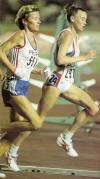
Liz McColgan (formerly Liz Lynch), above, became the best known Scottish and UK distance runner. Her full profile should be read. A few highlights include the following. Scottish titles at 1500m indoors, 3000m (both indoors and outdoors) and Cross Country (aged 39, in 2004). UK titles at 3000m, 5000m and 10,000m. Taking part in Commonwealth, European and World Championships and three Olympic Games. Two Commonwealth gold medals for 10,000m (in 1986 and 1990). Silver medals in the 1987 World Cross, 1988 Olympic 10,000m and 1989 World Indoor 3000m. Winning the World Championship 10,000m in 1991, simply burning off her rivals with relentless front-running. Being named 1991 BBC Sports Personality of the Year. A World Half Marathon victory in 1991. Winning the New York, Tokyo and London Marathons. Breaking Scottish, British, Commonwealth, European and World records. What a talented, tough athlete; what an amazing career. Dundee, Scotland and Britain should be very proud of Liz McColgan.
SCOTTISH WOMEN IN THE WORLD CROSS 1988-2017
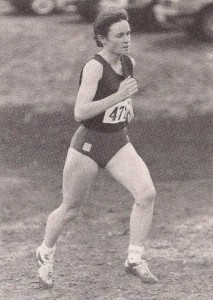
Vikki McPherson
Predictably, English runners have packed most UK teams in the World Cross and Scottish athletes, unable to race cross country for their country, lost some motivation as well as valuable racing experience against the best opposition. However a number of Scots have been selected and have run well in the three events available: Senior Women Long Course; Senior Women Short Course; and Junior Women.
Senior Women
No Scots, predictably, were selected for the Senior Women’s Long Course Championships between 1988 and 1990. Trials were held in England.
In 1991 at Antwerp, Liz McColgan (nee Lynch) ran with her usual fire to secure the bronze medal, only four seconds behind Lynn Jennings and one second behind future Olympic champion Derartu Tulu of Ethiopia. 126 ran. The UK team was 5th from 20.
The 1992 World Championship was held in Boston, USA. 127 ran. Liz McColgan finished 41st (3rd Briton) and Vikki McPherson 61st (5th Briton). Derartu Tulu did not finish. The UK team was 7th from 21.
Vikki McPherson: In 1992 the Glasgow University student won the British Universities and the Scottish XC titles. She won the Senior National again in 1993 and, running for City of Glasgow AC, in 1995. On the track, Vikki McPherson became AAA 10,000m champion in 1993 and won the UK 10,000m in 1997. She ran that distance in the 1993 World Championships and two Commonwealth Games: 1994 (5th) and 1998 (4th).
Amorbieta, Spain, was the venue in 1993. 148 ran. Liz McColgan produced another excellent performance, finishing 5th in a top class field. Paula Radcliffe was 18th and Scottish champion Vikki McPherson ran very well to be 38th (third Briton). The UK team finished 7th from 26.
Budapest, Hungary, hosted the 1994 event. 148 ran. Vikki McPherson (now City of Glasgow AC) was selected for the third year in succession and finished 80th (4th Briton).
No Scots were selected in 1995, but in 1996 (Stellenbosch, South Africa) Vikki McPherson finished 49th (and second Briton) behind Paula Radcliffe (19th). 133 ran.
In 1997 the World Cross took place in Turin, Italy. 148 raced. Paula Radcliffe won a silver medal and Hayley Haining, the Scottish XC champion, ran a fine race to finish 22nd (third Briton). The UK team just missed out on medals, finishing 4th from 24 countries. Ethiopia won, with Kenya second and Ireland third, mainly thanks to Catherina McKiernan (7th) and Sonia O’Sullivan (9th).
Hayley Haining was very talented but susceptible to injury. Nevertheless she achieved many excellent results and carved out a long career. She won the 1985 British Schools Cross-Country international at the age of 13; and later that year won the SWAAA 800m title for her age group. In 1990 and 1991 she ran for the UK in the World Cross Country Championships for Junior Women. Hayley became a Glasgow University team-mate of Vikki McPherson and in 1991 beat her into third place when winning the National Senior XC title. Hayley, representing City of Glasgow AC, won that championship again in 1997 and 2000. In 1995, Hayley secured the Scottish track 5000m title, which she regained in 2000. In 1999 Hayley Haining won the AAA 5000m championship; and in 2008 (running for Kilbarchan AC) finished first in the Scottish 10,000m championship. Apart from Team Bronze in the World Cross Senior Long Course in 1998, her best race was probably in the 2005 World Championship Marathon in Helsinki, when Paula Radcliffe won, Hayley was 25th and GB won World Cup Team Bronze, behind Kenya and Japan but ahead of Ethiopia. In the 2006 Commonwealth Games marathon she finished 9th. Then Hayley was unlucky because, after running an excellent 2.29.18 in the London Marathon, she was named only first reserve for the Olympic event. Finally, aged 42, in the 2014 Commonwealth Games marathon, held in her home town of Glasgow, she rounded off a very successful career with 13th place.
In 1998 the World Cross moved to Marrakech. 97 ran. Ten years earlier, the UK had won team silver; and in 2004 finished third. In 1998 it was an excellent third place as well – and between 1988 and 2017, these were the only team medals gained by the UK. In Morocco, Paula Radcliffe won silver. She received strong support from two Scots – Hayley Haining (13th) and Vikki McPherson (25th), as well as Liz Talbot (34th). 15 teams started and only Kenya and Ethiopia were ahead of UK.
No Scots were selected in 1999 but in 2000 the World Cross was held in Vilamoura, Portugal. 104 ran. Paula Radcliffe finished 5th and Scottish champion Hayley Haining was 56th (fifth Briton). The UK team was sixth from 16.
Paula Radcliffe won at last in 2001, alas without Scottish team-mates. She retained the World Cross title in 2002, when the event took place in Dublin, where 88 started. Kathy Butler ran well to finish 18th (third Briton), and the team was fifth from 13.
No Scots were selected in 2003 but Kathy Butler featured again in 2004 (Brussels, 100 starters) finishing an excellent 11th, and leading the UK team to third place from 14 teams, behind the inevitable Ethiopia and Kenya. By now, fewer countries tended to participate, presumably because of predictable African domination.
Kathy Butler had previously competed for Canada in the 1996 Olympic 5000m. However she had been born in Edinburgh (with English parents). Kathy changed allegiance to the UK in 2000 and she ran well in the 2001 World Cross Short Course event, for which she was selected again in 2003. Scottish 1500m titles were won in 2000 and 2001, when she ran the World Championship 3000m and 5000m. In 2004 she won the AAA 10,000m (a title she retained a year later) and finished 12th in that event at the 2004 Olympics. Kathy Butler specialised in 10.000m and was 12th in the 2006 European Championships and 7th in the 2006 Commonwealth Games.
In 2005, when the World Cross moved to St Etienne, France. Kathy Butler started but did not finish.
Fukuoka, Japan, was the 2006 venue and 99 started. Kathy Butler finished 32nd and second Briton but the team was seventh from 15 countries.
No Scot competed in 2007 but in 2008, when the World Cross was held in Holyrood Park, Edinburgh and 99 started, Laura Kenney ran well to finish 38th and third Briton. The team was 6th from 12 nations.
Laura Kenney’s married name was Laura Whittle. Her father was Paul Kenney, who ran well for Scotland in the World Cross at Junior and Senior levels. In 2010 and 2015 she was second in the AAA 5000m (and third in 2008 and 2014). Laura competed internationally for GB and also for Scotland in the 2014 Commonwealth Games, where she ran a fine race to finish sixth.
The 2009 event took place in Amman, Jordan, where 97 started. Steph Twell finished 38th and first Briton. The team was ninth from twelve.
Steph Twell (who had a Scottish mother) was a very promising athlete who enjoyed tremendous early success before suffering a fractured ankle in a 2011 cross country race. Since then she has fought back bravely and has gained GB selection for further major championships. In 2005 and 2006 she ran for UK in the World Cross event for Junior Women; and won the European Junior Cross Country championship three times (2006-2008). Steph won the 2008 World Junior 1500m title. In 2009 she ran 1500m in the World Championships; and a year later finished 7th in the European 1500m. Running for Scotland, Steph Twell won a bronze medal in the 2010 Commonwealth Games 1500m and was fourth in the 5000m. She set a new Scottish 5000m record that year. Eventually recovering from that horrible injury, she won the 2013 Scottish 1500m title and ran 5000m in the 2014 Commonwealth Games and 2015 World Championships. In 2015 she won the GB 5000m; and a year later the GB Indoor 3000m. 2016 was a very successful year, since Steph was sixth in the World Indoor 3000m; won bronze in the European 5000m; and competed at that distance in the 2016 Olympic Games in Rio de Janeiro.
Two Scots were selected for the 2010 World Cross in Bydgoszcz, Poland, where only 86 started. Steph Twell finished 23rd to lead the UK team, with Freya Murray 37th and 3rd Briton. The UK team was sixth from twelve.
Freya Murray (married name Freya Ross) won the 2001 Scottish under-17 XC title; the 2003 and 2004 under-20 championships; and the Senior National six times (2006, 2007 and 2009-2012). She ran for UK in the 2004 Junior World Cross. Freya won two Scottish track championships: 10,000m in 2009 and 5000m in 2010. In addition she was UK 5000m champion in 2009 and 2010. In the 2010 Commonwealth Games Freya was 7th in the 5000m and 5th in the 10,000m. After running the 2012 London Marathon in an impressive 2.28.12 Freya Murray was selected to compete for GB in the London Olympic Games marathon and did well to finish 44th (first Briton – 2.32.14) in a truly world class field.
No Scot was chosen in 2011 but because from then on the World Cross was to be held every two years, the next event was in 2013, again in Bydgoszcz, Poland. 97 started. Steph Twell finished 40th (third Briton) and the team was seventh from 15.
In 2015 (Guiyang, China) when 83 started, only two British athletes were chosen for the Senior Women’s race. England’s Gemma Steel ran well to finished 18th, as did Scotland’s Rhona Auckland (19th) who was only three seconds behind.
Rhona Auckland was a promising young cross country and track runner from the North East of Scotland. Her victories included: 2011 Celtic Nations XC; 2012 Scottish National 4k XC; 2013 Scottish National XC; 2014 Scottish National Short Course XC. At Under-23 level, Rhona won four European titles: 2013 Cross Country and 10,000m track; 2014 Cross Country; and 2015 10,000m. In 2015 she won the British Universities 5000m, the English Under-23 5000m, and the British Senior 10,000m track championships. Her personal best for 10,000m was a very good 32 minutes 22.79 seconds.
In 2017, no Senior Women competed for UK in Kampala, Uganda. Could the IAAF World Cross Country Championships continue much longer? Why did the UK not send a team? Surely many runners in that country still competed seriously in cross country?
IAAF WORLD CROSS: WOMEN’S SHORT COURSE 1998-2005
This eight-year experiment involve only two Scots.
In Ostend 2001, 118 ran. Kathy Butler (who had been fourth for Canada in 1999) finished 12th (second Briton) and the UK team was fourth from 19 countries.
Both Kathy Butler and Freya Murray were selected to compete in 2003 but neither started the race.
In Brussels 2004, 97 started. Kathy Butler finished 20th (second Briton) and Freya Murray 52nd (fourth Briton). The UK team was 5th from 12 nations.
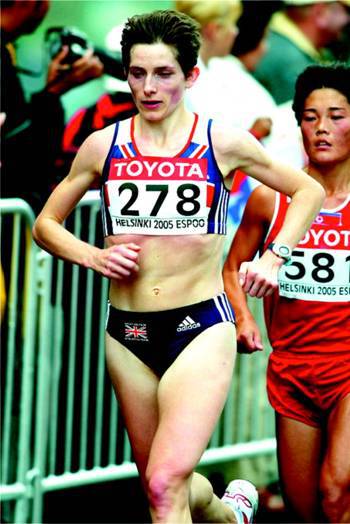
Hayley Haining
IAAF WORLD CROSS: JUNIOR WOMEN 1989 onwards
In 1990 at Aix-les-Bains, France, 121 ran, Hayley Haining finished 42nd (4th Briton) and the UK team was fifth from 21 countries.
The venue in 1991 was Antwerp. 127 started. Hayley Haining ran very well to be 7th (first Briton, since Paula Radcliffe was 15th). The UK team was fourth from 20.
1996 (Stellenbosch, South Africa) was the next time a Scot was selected for the UK team. Unfortunately Sheila Fairweather started but did not finish.
Sheila Fairweather (City of Glasgow AC) was a very promising athlete who won the Scottish National XC under 17 title in 1995 and the under 20 championship in 1998. In 1997 she became Scottish track 5000m title holder.
Belfast was where the 1999 Junior World Cross took place. 124 ran. Susan Partridge finished 89th (5th Briton) and the UK team was 13th from 21.
Susan Partridge (Victoria Park City of Glasgow / Leeds City). Her father Alan was a good Scottish middle distance and cross country runner. Susan won the Scottish under 17 XC title in 1996 and 1997. She ran for UK in the 1998 European Junior XC Championships and the 1999 Junior World Cross XC. She won the Senior National XC in 2003 and 2008. In 2003 she finished first in the Scottish track 5000m. Her career as a marathon runner started in 2004 and in 2005 she ran for GB in the World Half Marathon championships, finishing a good 25th. She competed for Scotland in the 2006 Commonwealth Games marathon, running well to finish tenth. In the 2010 European marathon she was 16th and the British team won bronze medals in the European Marathon Cup. In the 2011 World Championships marathon she was first Briton in 24th place. Susan Partridge’s best time for the classic distance was 2 hrs 30 minutes 46 seconds.
In 2001 at Ostend, 130 ran. Collette Fagan finished 38th (third Briton) and the UK team did well to be 6th from 23.
Collette Fagan (City of Glasgow AC) won the Scottish under-20 National XC title in 2002; and the Senior National in 2005. She was first in the Scottish 5000m championship in 2004 (when she was third in the AAA as well) and retained the Scottish 5000m title in 2005. Collette ran for Scotland in the 2006 Commonwealth Games 10,000m, finishing twelfth.
In 2002 Freya Murray was selected but did not start.
Brussels was the venue in 2004, when 117 started. Rosie Smith finished 56th (second Briton) and the team was 11th from 17.
Rosie Smith has run for Edinburgh University and Hunter’s Bog Trotters, the most cavalier club in the country. Between 2010 and 2016 she won 3 silver and three bronze medals in the Senior National XC. In 2010 and 2016 Rosie Smith led HBT to the Scottish team title – feats which were doubtless celebrated thoroughly!
St Etienne, France, hosted the event in 2005. 117 started. Steph Twell finished 60th (third Briton) and Morag MacLarty was 71st (4th Briton). The team was 8th from 17.
Morag MacLarty (Central) won the Scottish under 17 National XC in 2002 and 2003, the Junior National in 2005 and the Senior National title in 2017. On the track Morag ran for Scotland in the 2006 Commonwealth Games 1500m; and won the Scottish 1500m title in 2008, 2009, 2010 and 2015.
The Junior Women’s race at the 2006 World Cross was held in Fukuoka and there were 78 starters. Steph Twell improved to 30th (2nd Briton) and the team was fifth from twelve.
In 2007 (Mombasa, Kenya) Olivia Kenney (Royal Sutton Coldfield) finished 38th from 87 (fourth Briton), with the UK team fifth from 11. (Although Olivia, like Laura, had a Scottish mother, I am not sure that she followed her sister’s lead by running in or for Scotland.)
The 2010 (Bydgoszcz, Poland) team featured Beth Potter, who finished 36th from 95 and fifth Briton. UK was fifth from 14.
Beth Potter (Victoria Park City of Glasgow AC) won the Scottish under 17 National XC in 2008 and 2009, the Junior National in 2011 and the Senior National title in 2016. She was third in the GB 5000m in 2011 and second in the GB 10,000m in 2014. In 2014 she ran for Scotland in the Commonwealth Games 5000m (9th) and the 10,000m (5th); she was also 14th in the European Championship 10,000m. Then in 2016 she ran that distance for GB in the Rio Olympics.
In 2017 the World Cross moved to Kampala, Uganda. 104 ran in the Junior Women’s race (for under 20 year olds). Two Scots did well in difficult conditions, after unpleasant travel injections and a long flight, arriving one day before the event. Gillian Black finished 46th and Anna Macfadyen 48th. They were second and third Britons. Although the UK team was 9th from 16, the other competing European teams – Spain and Italy – were defeated, as well as Morocco, Australia, USA, Peru and Tanzania.
Gillian Black (Victoria Park City of Glasgow AC) has been a good athlete for quite a while. She won the Scottish Schools 1500m (Group B) in 2013; and the 3000m in both 2013 and 2014. As an under 20 runner, in 2015 she was first in the Celtic Games XC; and won the National Short Course XC title. In 2017 she became National XC under 20 champion; and was second to Anna in the English Inter Counties in Loughborough, which ensured selection for Kampala.
Anna Macfadyen (Forres Harriers) is a year younger than Gillian and in 2016 won the National under 17 XC title. She was first in the North District XC championships, won the Scottish Schools XC and ran for Scotland in the Czech Republic, finishing seventh in the International Mountain Running Youth Cup. In 2017 Anna won the Scottish Schools XC title again; was second to Gillian in the under 20 National XC; won the Celtic Games/GB Cross Challenge in Cardiff; and then won the English Inter Counties XC/GB Cross Challenge outright in Loughborough, which ensured selection for Kampala.
Both of those young Scottish women show great promise and, if they remain committed to their sport, and avoid over-training and injury, I can see no reason why they should not enjoy long, successful careers in athletics, emulating the distinguished runners who have been mentioned in this brief history of Scottish Women who have participated in the ICCU or IAAF World Cross Country Championships between 1935 and 2017.
Scottish Senior Women in the IAAF World Cross Country Championships
Rhona Auckland Aberdeen AAC (1) 2015 (19)
Lynda Bain Aberdeen AAC (1) 1985 (113)
Ann Barrass / Parker Aldershot F&D (3) 1973 (38), 1975 (56), 1976 (60)
Alison Brown Greenock Rankin Park (1) 1975 (64)
Kathy Butler Windsor, S and E
Mary Chambers Blaydon H/EAC (2) 1973 (61), 1976 (61)
Margaret Coomber Cambridge H (8) 1973 (19), 1974 (39), 1975 (42), 1976 (54), 1977 (52), 1978 (69), 1979 (82), 1980 (88)
Andrea Everett Glasgow AC (1) 1984 (100)
Katie Fitzgibbon London Olympiades AC (1) 1987 (138)
Palm Gunstone Dundee HH (3) 1973 (74), 1974 (63), 1975 (67)
Hayley Haining Glasgow University/City of Glasgow AC (3) 1997 (22), 1998 (13),
Barbara Harvie/Murray Aberdeen University 2 1980 (79), 1981 (103)
Christine Haskett/Price Dundee HH/Stretford AC (10) 1973 (27), 1974 (33), 1975 (23), 1976 (23), 1977 (61), 1981 (68), 1982 (36), 1985 (94), 1986 (57), 1987 (81)
Janet Higgins Glasgow AC (2) 1977 (92), 1978 (87)
Violet Hope/Blair Central Region AC (2) 1978 (91), 1979 (91)
Kirsty Husband Edinburgh Southern H (1) 1984 (84)
Gillian Hutcheson Edinburgh University (1) 1977 (86)
Laura Kenney Royal Sutton Coldfield (1) 2008 (38)
Liz Lynch/McColgan Dundee Hawkhill H (2) 1982 (71), 1987 (2), 1991 (3), 1992 (41), 1993 (5).
Jean Lorden Edinburgh Southern H 3 1982 (66), 1983 (77), 1986 (107),
Elise Lyon Wycombe Phoenix (3) 1983 (67), 1984 (77), 1985 (84)
Linsey Macdonald Pitreavie AC (1) 1981 (110)
Lynne MacDougall Glasgow AC (3) 1981 (75), 1982 (81), 1983 (97)
Karen MacLeod Edinburgh AC (3) 1985 (107), 1986 (101), 1987 (64)
Sonia McLaren Aberdeen AAC (1) 1980 (89)
Christine McMeekin / Whittingham Glasgow AC / WSE (2) 1980 (18), 1984 (81)
Vikki McPherson Glasgow University/ City of Glasgow AC (5) 1992 (61), 1993 (38), 1994 (80), 1996 (49), 1998 (25)
Fiona McQueen Glasgow AC (5) 1978 (79), 1979 (57), 1980 (73), 1983 (51), 1984 (41)
Kathy Mearns Aberdeen AAC (3) 1982 (65), 1983 (53), 1984 (87)
Freya Murray Edinburgh AC (1) 2010 (37)
Yvonne Murray Edinburgh AC (6) 1981 (79), 1982 (42), 1983 (94), 1985 (42), 1986 (38), 1987 (16)
Moira O’Boyle Victoria Park AC (3) 1973 (43), 1974 (43), 1976 (41)
Arlene Pursglove Westbury H (1) 1974 (61)
Marsela Robertson Edinburgh Woollen Mill (1) 1986 (25)
Kerry Robinson Pitreavie AC (3) 1978 (89), 1979 (67), 1980 (99)
Penny Rother Dundee Hawkhill/EAC (1) 1987 (131)
Judith Shepherd Glasgow AC (3) 1977 (65), 1978 (22), 1979 (44)
June Standing Crawley H (2) 1985 (101), 1986 (139)
Mary Stewart Birchfield H (3) 1974 (8th), 1975 (8), 1976 (9)
Elizabeth Trotter Glasgow AC (1) 1979 (93)
Steph Twell Aldershot F&D (3) 2009 (38), 2010 (23), 2013 (40)
Alison Wright Edinburgh Southern H (1) 1981 (95)
Rubina Young Shettleston H (1) 1977 (89)
